







































Learn more: vandergraaf.com/PFW (888)326-1476 The Most Hygienic Conveyor Belt Drive SSV Series Drum Motor APRIL 2023
New patented SSV-XP Drum Motor features an exchangeable profiled sleeve on the drum to drive various modular conveyor belts using the same drum motor.













The profiled sleeve is quick and easy to remove and replace with another profiled sleeve to match the belt required on the conveyor. The profiled sleeve is available for all belt manufacturers.












































For more information contact VDG: Sales@vandergraaf.com Scan to watch how easily the profiled sleeve is exchanged. www.vandergraaf.com/PFW (888) 326-1476 Eliminate drive sprockets IP69K sealing system Washdown up to 3,000 psi
New Exchangeable Profile SSV-XP Drum Motors
STRATEGIES FOR SUCCESSFUL SANITARY PLANT DESIGN






Understanding the Cost of Employee Turnover

Let’s Talk About Your Automation Headaches
New Product Innovations
April 2023
FLEXI-DISC® Tubular Cable Conveyors gently slide fragile foods and non-foods through smooth stainless steel tubing routed horizontally, vertically or at any angle, over short or long distances, dustfree. Single or multiple inlets and outlets.



FLEXICON® Manual Dumping Stations allow dust-free dumping of bulk material from bags and other containers. Automatic reverse-pulse filter cleaning allows continuous, efficient operation. Available with integral bag compactors for total dust containment.
BULK-OUT® Bulk Bag Dischargers unload free- and non-free-flowing solids from bulk bags automatically. Allow untying, discharging, retying and collapsing of bulk bags—all dust-free. Available with weigh batching controls.

BLOCK-BUSTER® Bulk Bag Conditioners loosen bulk materials that have solidified during storage and shipment. Variable height turntable positions bag for hydraulic rams with contoured conditioning plates to press bag on all sides at all heights.
SWING-DOWN®, REAR-POST and TWIN-CENTERPOST™ Bulk Bag Fillers can fill one bulk bag per week or 20 per hour at the lowest cost per bag. Numerous performance options. Available to industrial or sanitary standards.



FLEXICON® Flexible Screw Conveyors transport free- and non-freeflowing bulk solid materials from large pellets to sub-micron powders, including products that pack, cake or smear, with no separation of blends, dust-free at low cost. No bearings contact material. Easy to clean quickly, thoroughly.
PNEUMATI-CON® Pneumatic Conveying Systems move a broad range of bulk materials over short or long distances, between single or multiple inlet and discharge points in low to high capacities. Available as dilute-phase vacuum or positive pressure systems, fully integrated with your process.
TIP-TITE® Container Dumpers dump bulk material from drums (shown), boxes or other containers into vessels up to 10 ft (3 m) high. Dust-tight (shown) or open chute models improve efficiency and safety of an age-old task.
The FLEXICON® Lifetime Performance Guarantee* assures you of a successful result, whether you purchase one piece of equipment or an engineered, automated plant-wide system. From initial testing in large-scale laboratories, to single-source project management, to after-sale support by a worldwide network of factory experts, you can trust your process— and your reputation— to Flexicon.
LL-0464
©2023 Flexicon Corporation. Flexicon Corporation has registrations and pending applications for the trademark FLEXICON throughout the world. *See full Lifetime Performance Guarantee for details. USA sales@ exicon.com 1 888 FLEXICON UK AUSTRALIA SOUTH AFRICA SPAIN FRANCE GERMANY SINGAPORE INDONESIA MALAYSIA +44 (0)1227 374710 +61 (0)7 3879 4180 +27 (0)41 453 1871 +34 930 020 509 +33 (0)7 61 36 56 12 +49 173 900 78 76 +65 6778 9225 +62 81 1103 2400 +60 10 282 2400
CONVEYDUMPUNLOAD CONDITION FILLCONVEY CONVEY SUCCEED DUMP
��mm�a� mQ&�m,�a

Sustainable solutions that work in perfect harmony



Introducing the GEA One Line concept
To maximize productivity and sustainability while minimizing costs we have taken a radical new look at the slicing & packaging line.
Rather than seeing a series of loosely connected components, ours is a vision of unity. It is a single line in which all components work in total harmony – as one.
Contact us to learn more about this fully automated 25 meter line for precise slicing, loading and packaging.

GEA North America gea.com/unitedstates sales.northamerica@gea.com
This is the Way
2QO\�0XOWL �X[®�*06�PL[HUV�IURP�*HULFNH�LQFOXGH�D�SURSULHWDU\�� GRXEOH�URWRU�GHVLJQ�WKDW�GLUHFWV�\RXU�LQJUHGLHQWV�LQWR�D� �XLGL]HG� VDIHW\�]RQH�IRU�thorough - yet gentle - mixing and blending in as little as 30 seconds��:KHQ�LWȇV�WLPH�IRU�FOHDQLQJ��WKH�HQWLUH� IURQW�GRRU�RSHQV�DQG�WKH�RSWLRQDO��FDQWLOHYHUHG�PL[LQJ�PHFKDQLVP� VOLGHV�RXW�RQ�UDLOV�IRU�����GHJUHH�RSHQ�DFFHVV��)RU�KLJK�TXDOLW\� UHVXOWV�HYHU\�WLPH��WKLV�LV�WKH�ZD\�
6HH�QHZ�YLGHR��GRZQORDG�EURFKXUHV�DW�
GerickeGroup.com








*HULFNH�86$��ΖQF������:RUOGV�)DLU�'ULYH��6XLWH�&��6RPHUVHW��1-���������������ȏ�����������������[��������ȏ����VDOHV�XV#JHULFNHJURXS�FRP

Gericke is the way to a uniform, homogeneous mix, and fast, easy, complete cleaning.
Sifting • Size Reduction • Weighing • Feeding Conveying • Mixing • Bagging
!
ON THE COVER
FEATURES


20 OpX Intel: Labor Turnover Cost Calculator
Though everyone knows there are costs associated with the continued di culty of recruiting and retaining employees, but how much is typically a guess. There will soon be a tool to calculate that cost.
36 Tech Today: Increased Diagnostics in Process Instrumentation


Looking for increased production e ciency despite labor shortages, food and beverage producers demand more from their pressure, flow, temperature, and level sensors.


DEPARTMENTS 6 From the Editor Let’s Have a Conversation About Automation Headaches 9 In the News Automation Advice for Food and Beverage Manufacturers Forecasting the Future of Meat Lessons in Hygienic Design 23 Packaging Technology Coke Europe Adopts Tethered HDPE Closure Estrella Galicia Replaces Paperboard With ‘No Pack’ Nestlé’s KitKat Wades Into Recyclable Paper Packs 48 Plant Floor Products 56 Case Study: Andersen & Sons Shelling Rethinking Inspection Strategy After Adding Packaging Lines 58 Case Study: Leng-d’Or Collaborative Development Through a Global Lockdown 63 Tech Perspective Connecting Machine Data Into Actionable Information www.profoodworld.com | April 2023 | PROFOOD WORLD 3
Strategies for Hygienic Plant Design
facility built with sanitary design in mind can help manufacturers meet food safety goals,
an eye on ever-changing industry trends ensures that
Today’s
A
while
program stays successful.
PROCESSING SOLUTIONS
New Products CONTENTS APRIL 2023 28 36 56
DRY
42
EDITORIAL
EDITOR-IN-CHIEF AARON HAND 312/488-3392
ahand@pmmimediagroup.com
SENIOR EDITOR MICHAEL COSTA mcosta@pmmimediagroup.com
NEW PRODUCTS EDITOR MORGAN SMITH msmith@pmmimediagroup.com
CONTRIBUTING EDITORS
JEANNE SCHWEDER, STEPHEN PERRY, STEPHEN SCHLEGEL, JEFFREY BARACH
ART
ART DIRECTOR KATHY TRAVIS
CREATIVE DIRECTOR DAVID BACHO
PMMI MEDIA GROUP
VICE PRESIDENT, SALES WENDY SAWTELL VICE PRESIDENT, DIGITAL ELIZABETH KACHORIS
SENIOR DIRECTOR, CLIENT SUCCESS AND MEDIA OPERATIONS KELLY GREEBY DIRECTOR, DIGITAL MEDIA JEN KREPELKA
SENIOR DIRECTOR, CONTENT & BRAND GROWTH MIKE PROKOPEAK
SENIOR DIRECTOR, EVENTS TREY SMITH DIRECTOR, MARKETING SHARON TAYLOR
SENIOR MARKETING MANAGER AMBER MILLER
CONNECT WITH US
@ProFoodWorld
@ProFoodWorld
www.linkedin.com/ showcase/profoodworld
PRESIDENT, PMMI MEDIA GROUP DAVID NEWCORN
FOUNDING PARTNER AND EXECUTIVE VICE PRESIDENT, INDUSTRY OUTREACH, PMMI JOSEPH ANGEL
FOUNDING PARTNER LLOYD FERGUSON
ADVERTISING
PUBLISHER PATRICK YOUNG pyoung@pmmimediagroup.com
• 610/251-2579
ACCOUNT EXECUTIVE BRIAN J. GRONOWSKI bgronowski@pmmimediagroup.com
• 440/564-5920
BRAND OPERATIONS MANAGER CLAUDIA SMITH csmith@pmmimediagroup.com
• 312/222-1345
PRODUCTION MANAGER GEORGE SHURTLEFF gshurtle @pmmimediagroup.com
FINANCIAL SERVICES MANAGER JANET FABIANO jfabiano@pmmimediagroup.com
Questions about your subscription or wish to renew? Contact circulation@pmmimediagroup.com.
ProFood World • PMMI Media Group 401 N. Michigan Ave., Suite 1700, Chicago, IL 60611
Phone: 312/222-1010 • Fax: 312/222-1310
Email: info@pmmimediagroup.com • Web: www.profoodworld.com
PMMI, The Association for Packaging and Processing Technologies 12930 Worldgate Drive, Suite 200, Herndon, VA 20170 Phone: 571/612-3200 • Fax: 703/243-8556 • Web: www.pmmi.org
Sta at PMMI Media Group can be contacted at info@pmmimediagroup.com.
@ ProFoodWorld
ProFood World ISSN 2476-0676
4 PROFOOD WORLD | April 2023 | www.profoodworld.com




v yda s r v Our awar a v o r v ay ca nd r o r a Liquid
r ays
Let’s Get the Conversation Going About Your Automation Headaches
Automation is becoming more essential than ever, but that doesn’t make it easy. Join us on LinkedIn to tell us what’s giving you the most problems as you make your transition.
My apologies if I’ve been talking about automation a lot lately. But, frankly, the whole food and beverage industry has been talking about automation a lot lately. And we go where the story is.
Though manual labor is still plenty common throughout the industry, automation in today’s environment has moved from a nice to have to a must have. That’s the view from CRB’s Jerry Steenhoek, who I sat down with to get some insight from his decades of experience in automation and system design (see “Automation Advice for Food and Beverage Manufacturing,” page 9). As a rule, it has become essential to incorporate automation into your production lines if you have any hope of meeting the demands that customers are placing on you.
But like any rule, there are exceptions. And it’s particularly important to remember that this is not an all-or-nothing proposition. Automation brings with it its share of complications, and it can be di cult to strike a balance between the level of automation you’re seeking and the flexibility you need. This point came up in a recent panel discussion organized by belt manufacturer Intralox.
As OEMs have tried to accommodate demands for more customized orders, the machines are growing more complex and more di cult to maintain, says Ken Vonderhaar of Anheuser-Busch. The situation gets even more complex from a co-packer’s point of view, notes Cory Gardner of Shearer’s Snacks, which had to first simplify its material flexibility before moving to a semi-automated model.
Where are you on your automation journey? What roadblocks are you finding as you try to incorporate more automation into your lines? What are the things keeping you up at night? Join us on LinkedIn, where I’ve posed these questions for you to chime in on at your leisure. Find us at www.linkedin. com/showcase/profoodworld.
EDITORIAL ADVISORY BOARD
CHRISTINE BENSE
CHIEF SUPPLY CHAIN OFFICER
Turkey Hill
GREG FLICKINGER
CHIEF OPERATING OFFICER
Nobell Foods
JOHN HILKER


FORMER DIRECTOR OF MANUFACTURING
Blommer Chocolate Company
VINCE NASTI
VP, OPERATIONS
Nation Pizza & Foods
JIM PRUNESTI
VP, ENGINEERING
Conagra Brands
LISA RATHBURN
VP, ENGINEERING
T. Marzetti
MARK SHAYE
VP, ENGINEERING
Ken’s Foods
TONY VANDENOEVER
FORMER DIRECTOR, SUPPLY
CHAIN ENGINEERING
PepsiCo
DIANE WOLF
FORMER VP OF ENGINEERING AND OPERATIONS
Kraft Foods
BROOKE WYNN
SENIOR DIRECTOR OF SUSTAINABILITY
Smithfield Foods
ahand@pmmimediagroup.com
AARON HAND | EDITOR-IN-CHIEF FROM THE EDITOR
6 PROFOOD WORLD | April 2023 | www.profoodworld.com
RIBBON/PADDLE/PLOW BLENDERS HANDLE POWDERS TO PASTES




MUNSON® Ribbon, Paddle and Plow Blenders force agitators through stationary materials, imparting shear needed to reduce agglomerates and blend pastes and slurries. Choose from basic, low cost industrial units to state-ofthe-art designs of 304/316 stainless with heating/ cooling jackets, liquid spray additions, high-speed choppers/intensi ers, and nishes to USDA Dairy and other standards. Extreme vessel rigidity allows tight agitator-to-vessel wall tolerances, resulting in a minimum “heel” of residual following discharge. Heavy- and extra-heavy-duty batch and continuous models in capacities from 1 to 1,150 cu ft (.03 to 32 m3).
VEE-CONE BLENDERS SANITIZE ULTRA-FAST, THOROUGHLY
MUNSON® Vee-Cone

Blenders feature smooth internal surfaces free of baf es, shafts and bearings, allowing unobstructed material ow, plus complete discharge through a gate valve for rapid cleaning or sanitizing of the easy-access interior. Uniform blends are typically achieved in 5 to 15 minutes with equal ef ciency at ll volumes from 100% to 25% of capacity. Ideal for dry and granular materials, these blenders provide a tumbling action that is gentler than machines that force agitators through stationary material. Options include spray bars for liquid additions, Clean-In-Place (CIP) systems, abrasion-resistant steel construction, ASME-coded jackets and weigh batching accessories.
WORLD’S FASTEST BLENDING AND CLEAN UP
100% Uniform blending and/or liquid additions to 1 ppm in 2-1/2 minutes
Total discharge with no segregation
Ultra-gentle tumbling action (versus blades forced through batch)
Ultra-low energy usage
Equal ef ciency from 100% to 15% of capacity
Unlike other rotary mixers: –No internal shaft or seals contacting material –Every internal surface accessible –Signi cantly faster washdown
–Seal changes 10x to 20x faster
FLUIDIZED BED MIXERS BLEND ULTRA-FAST, GENTLY

Unlike Ribbon and Paddle Blenders with a single agitator shaft, MUNSON® Fluidized Bed Mixers feature two shafts with paddles that counter-rotate at higher speeds to uidize material, achieving homogeneous blends in 10 seconds to 2 minutes. Low shear forces minimize friction with little or no degradation and insigni cant heat generation of <0.6°F (1°C). Drop-bottom gates provide rapid discharge with no segregation and minimal residual. Ideal for short cycles and gentle handling of low- to medium-density powders and fragile akes 50 lbs/ft3 ( 800 kg/m3) with or without liquid additions. Capacities from 0.21 to 283 cu ft (6 L to 8 m3).
LUMP BREAKERS REDUCE AGGLOMERATES, FRIABLE MATERIALS
Remove lumps and agglomerates from bulk foods, nutraceuticals and pharmaceuticals, or break down friable materials. Dual rotors with threepoint, single-piece breaking heads rotate with minimum clearance inside a curved, perforated bedscreen. On-size material exits through bedscreen apertures. The low pro le design ts tight spaces between upstream and downstream process equipment, while side-removal bedscreens allow fast, in-place sanitizing. Square or rectangular inlets range from 15 to 48 in. (38 to 122 cm) in width—classifying screen apertures from 1/32 to 2-1/2 in. (0.8 to 63.5 mm) in diameter.
PIN MILLS REDUCE FRIABLE SOLIDS IN CONTROLLED SIZE RANGES
Also known as Centrifugal Impact Mills, these MUNSON® machines deliver coarse to ne grinding of friable powders, akes and granules into controlled particle sizes at high rates per HP/kW. High-speed rotation of the inner disc creates centrifugal force that accelerates bulk material entering the central inlet of the opposing stationary disc. As material travels from the center to the periphery of the discs at high speed, it passes through a path of ve intermeshing rows of rotating and stationary pins, with the desired tight particle size distribution obtained by controlling the rotor speed.

+1-315-797-0090 USA: 1-800-944-6644 INFO@MUNSONMACHINERY.COM MUNSONMACHINERY.COM
No other bulk solids mixer delivers this unique combination of bene ts:
ROTARY BATCH MIXER
©2023 Munson Machinery Co., Inc. MUNSON® is a registered trademark of Munson Machinery Co., Inc. LL-0375
Fast yet gentle 4-way mixing action: fold/tumble/cut/turn

















It’s a sweet process! REMOVE UNWANTED METAL FROM FLOUR, SUGAR, AND SO MUCH MORE! 1385 S M-75, Boyne City, MI 49712 HACCP International Certified and USDA AMS Accepted Equipment. Industrial Magnetics Inc. imi@magnetics.com PHONE: 888.582.0821
Automation Advice for Food and Beverage Manufacturing
AARON HAND | EDITOR-IN-CHIEF
WHILE THE LATEST PACK EXPO International in Chicago provided a great opportunity to run around and view so many of the packaging and processing industry’s latest innovations, it was also a chance to sit down and catch up with some of the thought leaders in our industry. One such conversation was with Jerry Steenhoeck, CRB’s senior director of automation technology.
Kellogg Helps Build Pipeline of Younger Farmers in Midwest
Kellogg and retailer Meijer are partnering with The National Young Farmers Coalition to shift power to and equitably resource the next generation of working farmers, particularly farmers of color.
USDA Proposes New Requirements for ‘Product of USA’ Label Claim

The proposed rule allows use of “Product of USA” or “Made in the USA” labels only on meat, poultry, and egg products derived from animals born, raised, slaughtered, and processed in the U.S.
Jerry Steenhoek, CRB

Steenhoek had just recently been hired by CRB to bring his automation expertise to the designbuild fi rm’s food and beverage group. He has almost 30 years of experience in automation and process system design, operations networks, and cybersecurity. As we talked about automation and how it applies to food and beverage manufacturing, Steenhoek noted that his worldview is shaped in large part by his time as chief technologist at system integrator Interstates Control Systems.
PROFOOD WORLD: Comparing food and beverage to other industries, my impression has been that this industry is not exactly leading the automation charge. Has that changed in recent years?
JERRY STEENHOEK: The reality today, with the workforce challenges, is that automation is no longer a nice to have; it’s a must have. One of the reasons why CRB has funded up is because our clients are asking us to better own the automation piece. There’s more demand now for automation in the food and beverage space because of resource constraints.
And everyone’s getting pushed for sustainability; everybody’s been getting pushed on Industry 4.0. Automation is the basis upon which all those things are on top of. It’s kind of hard to have a digital factory when you just have pushbuttons and manual labor. It’s hard to really make change with sustainability when you have no means of tracking or controlling processes to help with sustainability e orts. Automation is more and more of a push today because of those factors—the lack of labor and corporate drive for sustainability and Industry 4.0.
PFW: Automation is such a broad, overarching topic. How do you approach this with a customer? Where do you start?
STEENHOEK: When we engage with a client, we like to create what we call a control philosophy. We talk to them upfront and ask, ‘What is it you want?
Feds Find 100+ Children Illegally Employed in Hazardous Jobs
The U.S. Department of Labor has fined Packers Sanitation Services $1.5 million in civil money penalties after finding the company had employed at least 102 children in hazardous occupations.
National Chicken Council Proposes Measure to Lower Egg Prices

The council has petitioned the FDA to reverse or modify its policy that forces the broiler industry to destroy nutritious, safe eggs, even though the FDA never stated they were unsafe.
Post Holdings to Pay Smucker $1.2 Billion for Pet Food Brands
Post Holdings has agreed to pay Smucker $1.2 billion for leading dog and cat food brands, such as Rachael Ray Nutrish and Nature’s Recipe, plus three manufacturing facilities.
NEWS IN THE
www.profoodworld.com | April 2023 | PROFOOD WORLD 9
PHOTO COURTESY OF CRB
And what is it you need?’ Because those are different. And then where would you like to get? And let’s design for both. On the plant floor today, you have to have networks because you’re moving data, you’re having to get things connected. That’s important and it’s cheaper to build that in early on in the process, especially on greenfields. But that control philosophy is really where we like to start with our clients. It’s sitting down with operations and sitting down with maintenance and sitting down with quality people and sitting down with all facets of the operation and getting their input and asking, ‘What are you looking to get out of your plant floor?’
And then you come back and you say, ‘Here’s the base automation.’ People talk about islands of automation—you can bring skids in and you can have everything kind of separate. Then you talk about integrating it all together, then you talk about the smart factory, then you talk about MES [manufacturing execution systems], then it ties into ERP [enterprise resource planning]. So it’s all layers and layers. But at the end of the day, automation is the basis on which everything is built.
PFW: We heard some talk during the COVID lockdown that more plants were getting their systems connected quickly and didn’t really have the time to do it right. Then later, they had to back up and make sure they were doing things more securely. What do you see happening in that area of network security?
STEENHOEK: Cybersecurity is a huge deal on the plant floor, and it seems like some people are kind of—I’m going to cross my fingers, it’s not going to happen to me. And other people are being really proactive. I think you’re seeing a lot of emerging technologies—a lot of startup companies trying to get a little di erent approach to cybersecurity on the plant floor. There are some software-defined networking companies out there that are looking to take that technology and apply it to the plant floor. There are companies out there trying to do more localized security—zones and conduits, if you will.
Typically, before, you had the firewall, and once you got by the firewall, the plant was available to everyone. Now there’s microsegmenting—putting firewalls that are underneath firewalls. Especially when you talk about having to give access to all the OEMs and skid manufacturers. And they want data going out as well. So now you’re punching holes in the firewall, not only coming in for remote access, but people are wanting data going out so
they can do maintenance on their machines, so they can push that into the cloud for their clients to take a look at.
So part of your control philosophy is understanding what your network design and your security parameters are going to be on your plant floor as well. You have to have those skillsets. You have to be able to work with the IT group but also understand how to design your networks on the platform.
PFW: What’s your perspective on robotics? Where does it stand in the food and beverage industry?
STEENHOEK: I do think robots are going to continue to move forward. The integration of vision and robotics is getting better and better—it’s amazing what a robot can see and figure out on the fly. With robotics, you’d always have a very rigid structure—that bag had to be here and it had to move here. And today, with vision integration, it allows robots to be smarter and do things more dynamically. So I think robotics are going to continue to grow, and I think automatic storage retrieval of materials with AVGs [automated guided vehicles], that is continuing to grow. The price point of that is still expensive, but as labor costs continue to go up, that’s getting closer.
We’re talking to our clients today, and they talk about their risk in the labor market. Their risk is material handling, and they’re looking to us to lead them into what technologies they’ll be looking at. Where can we look to alleviate risks in those areas?
I think robotics are going to continue to move forward. It’s amazing today what they can do compared to five years ago, and in five years, it’s going to be amazing what robotics are doing.
PFW: What other advice do you have as food and beverage manufacturers make their way through their automation journeys?
STEENHOEK: Clients get themselves into trouble when they don’t think ahead. They just start going and then realize—oh, let’s piecemeal, let’s add that, let’s do this. And on the other side of things, clients can get in trouble with believing that if they just buy a big platform, it’s going to solve their problems. Sometimes you need to go find best in class to make this work vs. just buying and signing one deal.
IN THE NEWS 10 PROFOOD WORLD | April 2023 | www.profoodworld.com
CRB www.crbgroup.com
Made for your blending process
ROSS Ribbon Blenders meet the toughest requirements for quality materials and heavy-duty construction. Standard features include thick stainless steel troughs, low-maintenance gearmotors, BISSC-certified design and much more.


Need a Ribbon Blender customized for your process? ROSS offers MANY options. Complete control systems, spray nozzles for coating, pressure feed vessels and vacuum operation, to name a few.
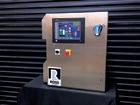





Used in a wide range of food applications, from granola and drink blends to soups, spices and plant-based proteins, we can customize a ROSS Ribbon Blender for your application.

Sizes from ½ cu. . to 1000 cu. . A variety of standard models are in stock for faster delivery. Available worldwide.

mixers.com/ribbon-blenders mixers.com 1-800-243-ROSS
Forecasting the Future of Meat
MICHAEL COSTA | SENIOR EDITOR
AMONG THE HIGHLIGHTS at the 2023 International Production & Processing Expo (IPPE) in Atlanta was a wide-ranging presentation about where the meat industry is headed, and what tools are available for processors to streamline their operations. Five experts forecast key areas to watch during the session, and here are some of their takeaways and advice for food manufacturing professionals.

Food safety and labor
Al Almanza, global head of food safety and quality assurance at protein giant JBS (and former deputy undersecretary for food safety under U.S. Secretary of Agriculture Thomas Vilsack), focused on how a successful, proactive food safety culture goes much deeper than what happens on the plant floor.
“People are the ones that will make or break you,” said Almanza, adding that everyone is responsible for food safety. “I’m not going to use any names, but the cleaning companies that are utilized in the meat industry—I’m sure most of you know what happened [last year]. So, what’s that got to do with food safety? It has everything to do with food safety, because we should have known about their hiring practices, regardless of whether they’re a contractor. So, if you have a security guard, or hire an outside company, or whatever, make sure all those people are adhering to your policies within your establishment and your facility, because that can cause you as much risk as anything.”
Almanza added that an unwavering focus on
being proactive instead of reactive when it comes to food safety can mitigate hazards before they happen, but that vigilance requires daily attention.
“When we see issues coming, we need to know how to address them,” he said. “There are opportunities for us to improve on a daily basis, but they’re always easier to put o until the next day or until our margins are better, and that’s something we need to do a better job of [as an industry].
Technology like artificial intelligence (AI) and predictive analytics can help make it easier to be proactive when it comes to food safety, according to Almanza, but the data generated by those tools needs to be applied daily. “What are you doing with that data? Are you making decisions that will make you better, or are you just collecting data for the sake of collecting data?”
Adding automation overall in meat processing facilities is “so critical,” Almanza said. “This has been a competitive three-shift, six-days-a-week industry forever. And people’s attitudes today are not aligned with the six-day work week. So even if 90% of your workforce is present and ready to go, that last 10% can throw your weight o . So, the more we can do to make jobs easier through automation, we won’t have to keep pressing three shifts a day all week.”
Sustainable packaging
Savannah Talmadge, director of business development at Sealed Air, detailed where sustainable meat packaging is heading, based on a 2021 survey conducted by Sealed Air. Talmadge’s team focuses on deploying sustainable food packaging solutions for renewable materials.
The survey queried 1,500 consumers that had purchased red meat in the past 30 days. The results revealed that 63% of shoppers threw their meat packaging into the trash rather than recycle it.
Those surveyed did say they were concerned about multiple sustainability features in meat packaging. At the top was recyclability (56%), followed by biodegradability (48%), using recycled materials (46%), and the amount of packaging waste (41%).
“By definition, [Federal Trade Commission] Green Guides say that packaging must be able to be collected, sorted, reprocessed and must be available to 60% of households to be recycled,” said Talmadge. “Recyclability means it’s actually collected and recycled back into packaging. Today
IN THE NEWS
12 PROFOOD WORLD | April 2023 | www.profoodworld.com
Panelists at IPPE 2023 discuss how labor challenges, sustainability, and more impact the meat industry.
PHOTO BY MICHAEL COSTA





























VIBRA SCREW INC. The most trusted name in dry solids processing www.vibrascrew.com
only 9% of the world’s plastics is recycled. Demand is expected to grow by 5.5 times in the next five years because most of the world’s largest consumer goods companies have made commitments to use recycled packaging. But the supply is lagging and there’s not enough recycled plastic to realistically meet those goals.”
Talmadge says a further challenge is that plastic packaging for food has strict hygiene and performance requirements for food protection and distribution. “The next few years are going to be critical to the commercialization of the advanced technology and business models necessary to make advanced recycling work at scale alongside mechanical recycling for those more rigid structures.”
Adherence to a sustainability waste hierarchy in the shape of an inverted pyramid “is really a great tool you can use to ensure that you’re enabling the most sustainable outcomes,” Talmadge said. At the top of this inverted pyramid is reducing packaging size and weight, followed by reusing packaging, then recycling, recovering, and at the bottom—the option that should be least used—is disposal.
“The expansion of refill/reuse models and recycled packaging will always win the day,” Talmadge said. “Really looking at this waste hierarchy using the four Rs provides guidance on where the future of sustainable packaging is going to be.”
Animal welfare, technology, transparency
Karen Christensen, senior director of animal welfare at Tyson Foods, discussed how technology is a ecting animal welfare and transparency for her company. “I’m really convinced that technology and innovation is going to move our e orts in animal welfare farther and faster than any progress we’ve seen over the last five, 10, or even 15 years,” she said.
Three technological tools impacting the welfare of chickens at Tyson, according to Christensen, are utilizing sensor data, monitoring the intensity of vocalizations from the chickens, and watching how they react to lighting conditions.
“This gives us the opportunity to intervene and mitigate any potential problems,” she said. “Things that we see very early on in the flock are very good predictors for what we will see at the end of the flock. So specifically, we’re seeing early indicators of footpad, dermatitis, heartburn, lameness, salmonella, Campylobacter, and other diseases.”
Speaking specifically to monitoring lighting conditions, Christensen observed the chickens “would prefer something with bright light over the feed, and then a gradient of light, which allows them to go away from the light to rest and feel safe.”
Regarding the intensity of vocalizations, Christensen pointed to an example when a fan malfunctioned in the coop, and the volume of the birds increased. “This data can be communicated to the farm caretakers,” she said, “and then we can begin to understand the type of disruptions that may impact the welfare and performance of the animals.”
Another benefit to using these technological tools is it allows companies like Tyson to show different levels of transparency to business partners and consumers at a time when so much potential disinformation about the poultry industry can be easily disseminated online and via social media.
“We can use this transparency to demonstrate the continuous improvement that we have and can generate,” said Christensen. “I know we’ve all heard it for the last 25 years, but our industry must get comfortable telling our story. We have to do that, because if we don’t, someone else will tell our story.”
Water conservation
Chad McCune, major account management at Birko, discussed water use in the beef industry—which can run in the hundreds of millions of gallons per minute—and how to recirculate and reuse the same water using modern wash cabinets that are focused on sustainability, which his company manufactures.
“That fresh water comes right into the plant, gets sprayed on a product, and goes straight down the drain,” said McCune. “Now we can recirculate in that cabinet. We’re re-pasteurizing the water as it comes back, and we can actually respray in the cabinet on the carcass.”
McCune showed a six-year beef case study where the water savings on carcass washing increased via recirculation year-over-year, all the way up to nearly 120 million gallons saved by the end. The data logged during that time also spotted areas for improvement to keep the conservation on track.
“I think sanitation is where we need to focus next [with water use],” said McCune, who mentioned that current clean-in-place (CIP) automation—along with data logging and flowmeters—can result in savings of 50% water, 20% chemical, and 25% labor.
“We know someone can be spraying a hose for 45 minutes, but we don’t know what he’s doing with it,” McCune said. “We know he might be spraying a belt, for example, but not much else. So, with flowmeters and with data collection, we can find out exactly what the impact is on water use. That’s where the future of sanitation needs to go.”
IN THE NEWS 14 PROFOOD WORLD | April 2023 | www.profoodworld.com
Birko birkocorp.com Sealed Air sealedair.com
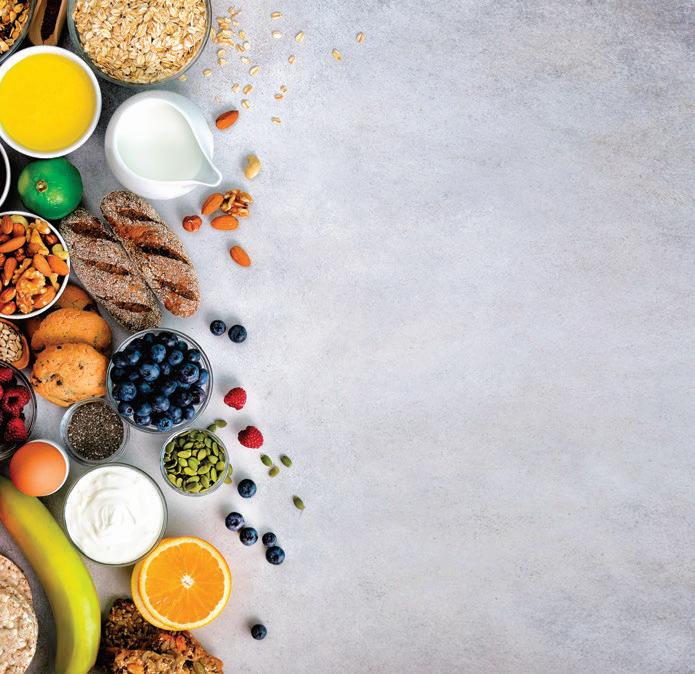




5944 East N Avenue Kalamazoo, Michigan 49048 (800) 427-6260 www.hapman.com 40+ YEARS OF EXPERIENCE | 7,300+ MATERIALS TESTED | 2,700+ MATERIALS HANDLED Your quality ingredients deserve to be handled by quality equipment. Hapman offers the most reliable conveying and bulk material handling equipment on the market. Convey with Confidencce
Fast Food Leader Learns Lessons in Hygienic Design
AARON HAND | EDITOR-IN-CHIEF
INSPIRE BRANDS is a young company, just five years old, but it’s made up of several mature restaurant chains—Arby’s, Baskin-Robbins, Bu alo Wild Wings, Dunkin’, Jimmy John’s, and Sonic Drive-In—that, together, make it the second largest restaurant company in the U.S. by sales. “Mature restaurant chains, young company—it’s definitely been a learning curve and a great opportunity for us to move forward,” says Chris Polito, director of food safety for Inspire.
It’s not been without its challenges, as Polito detailed for attendees of a food safety forum hosted by Commercial Food Sanitation (CFS) as part of the Intralox NEXT event in March in New Orleans. Inspire Brands has a shared service model today, but early on, its various brands were working in their own silos. As Inspire brought each of those brands together for joint e orts and learnings, it used both reactive and proactive lessons to move the organization forward as a whole.
“Designing for greatness [CFS’s theme for the forum] is best done proactively, right? But sometimes something rears its ugly head, and we have to learn the hard way,” Polito says. “The key is to embrace those learnings and really focus on building the walls taller and stronger. In other words, focusing on prevention for the future to try and mitigate those things from occurring again.”
Some of the stories that Polito shared dealt more with equipment used within the restaurants—flies getting into new drink machines with faulty seals,
for example, which led to better testing of the equipment received. But he also zeroed in on problems that Inspire’s food suppliers were facing with their equipment, which led in turn to contamination of the food supply.
Metal in food
Inspire started getting complaints from guests at the restaurant level about metal appearing in product. When Inspire contacted its supplier, the supplier revealed that it did have an issue in which a piece of metal broke o a piece of equipment and was processed and packaged. This was caught by the metal detector, though, production was put on hold, and 100% of the metal was accounted for. And yet Inspire restaurants kept getting metal complaints.
“Upon our further investigation into this, we had metal-on-metal contact,” Polito explains. “What had happened is the equipment loosened over time, and no one noticed, and it started interacting with another piece of equipment. And therefore we were getting metal shavings in the products and the metal detector wasn’t sensitive enough to catch it.”
This sort of thing has happened more than once, Polito notes, and it’s no small matter for customers to encounter metal in their food. “People think food safety has a lot to do with microbes, but that’s not always the case,” he says. “Foreign material is a big component of food safety as well.”
This issue ties into certification and culture. Expertise comes from training and certification, but it means nothing if the culture doesn’t tie into that as well, Polito asserts. Companies need to foster a culture of find and report rather than find and hide. “Unfortunately, that’s the reality—the culture to find and hide for fear of consequences,” he says.

Preventive maintenance, of course, plays a key role. But referencing again the design for greatness concept, this machine instead had an antiquated design. “It had multiple minor pieces, such as nuts, bolts, and screws, interacting with product over time, and it got into the product, which was causing major issues,” he says.
A key takeaway: “Prevention must be vigorous across an operation, but it’s most important at the source. If we’re just starting with the right design upfront, do we have to worry as much, do we have to put as many resources into this to ensure that we’re preventing issues from occurring?” Polito asks.
16 PROFOOD WORLD | April 2023 | www.profoodworld.com IN THE NEWS
Chris Polito, director of food safety for Inspire Brands, speaks at a food safety forum about hygienic design and the need for cultural change.
PHOTO BY AARON HAND
s
New Ideas for Increased Productivity

Optimize your process, boost yield, and improve product quality with the latest Linde innovations in food freezing.
CRYOCONNECT® RM – remote online monitoring system facilitates optimization of cryogenic freezing performance across operations.
ACCU-CHILL® LXC – the most advanced cryogen bottom-injection system provides rapid, precise temperature reduction during batch mixing or blending.
CRYOLINE® PB – plate belt tunnel freezer uses a solid stainless-steel VHJPHQWHG�FRQYH\RU�EHOW�WR�TXLFNO\�FUXVW�IUHH]H�GLIÀFXOW�WR handle products.

7KH�/LQGH�ORJR��WKH�/LQGH�ZRUGPDUN��&5<2/,1(��&5<2&211(&7�DQG�$&&8�&+,//�DUH�WUDGHPDUNV�RU�UHJLVWHUHG�WUDGHPDUNV�RI�/LQGH�SOF�RU�LWV�DIÀOLDWHV��&RS\ULJKW� �������/LQGH�SOF��������� Start getting more out of your process today. Find out more at lindefood.com/innovations or call us at 1-844-44LINDE Making our world
more productive
Polito’s advice to the restaurants and their suppliers alike is to engage and partner so that you know how to move forward when issues do occur.

Prevention is sweet
The final case that Polito presented was a happier tale—one of prevention through improved hygienic standards. “More and more, we are seeing food suppliers step up and improve their hygienic design programs. And there’s one in particular that we’ve had the pleasure of working with and observing over the last four or five years,” he says. “They’ve made the investment into hygienic design, and every year that I’ve been in there, it is night and day, it’s hard to recognize. They’ve realized a lot of benefits from going this route.”
One particular benefit is a change in culture, Polito notes. Employees see the investment that’s being made, and there’s a sense of pride of ownership. “There are design changes that protect people and there are design changes that make it more e cient to clean and sanitize, and this company has done both,” he says.
To get more wins from the prevention side of food safety and e ciency, Inspire built its own innovation

center in 2021. One of the things it does there is to test the hygienic design of equipment. “We want to innovate to keep things e cient and simple,” Polito says. “Hygienic design does not need to be complex. When hygienic design is complex, it poses more challenges, it’s harder to maintain, we’re going to cut more corners.”
In working with suppliers, Polito points to best practices such as getting the approval process right—making sure quality expectations and agreements incorporate sanitary design, for example, and reviewing third-party audits to identify other opportunities. Polito emphasizes the importance of visiting suppliers as well. “How are you going to see it if you’re not there?” he asks. “How are you going to verify those programs that support hygienic design and the data around that?”

It’s also important to set expectations and communicate these concepts to broader teams throughout the organization. “Make sure that you’re training all the right personnel to look out for these things,” Polito adds.

IN THE NEWS
Commercial
www.commercialfoodsanitation.com Intralox www.intralox.com
Food Sanitation
Registration Now Open for PACK EXPO Las Vegas
REGISTRATION IS NOW OPEN for PACK EXPO Las Vegas 2023 (Sept. 11–13, 2023; Las Vegas Convention Center). Produced by PMMI, The Association for Packaging and Processing Technologies, PACK EXPO Las Vegas 2023 will be the largest, most comprehensive edition of this trade show yet, with more than 2,000 exhibitors serving more than 40 vertical markets.
“Our industry is stronger than ever and positioned for unprecedented growth, making the kinds of connections and innovations that come from a world-class trade show more crucial than ever,” says Jim Pittas, president and CEO for PMMI. “Only at PACK EXPO Las Vegas can you gain insights on market trends, feed o the energy of nearly 30,000 peers, and see the latest technologies and materials in person—all in one place.”
Attendees will gain insight from 100+ educational sessions, talk to suppliers, see machinery in
action, and forge critical relationships. With more solutions under one roof than anywhere else in North America, new and growing show features will address critical industry trends. For example:

• Targeted Industry Pavilions—The Healthcare Packaging, Logistics (new), PACKage Printing, Containers and Materials, Reusable Packaging, and Confectionery Pavilions, and the newly expanded Processing Zone.

• Sustainability Central—Takes an expansive look into packaging sustainability and what it means to brands, including expert speakers, interactive content, and actionable sustainable solutions in manufacturing, materials, design, and more.
• Networking Events—These include Packaging and Processing Women’s Leadership Network, Young Professionals Events, and receptions. Visit packexpolasvegas.com to learn more and register today.
STEPHEN M. PERRY PH.D. | FOUNDER + COACH, FSO INSTITUTE
Contributors:
James Couch (formerly Smith eld Foods), Partner, Manufacturing Coach, FSO Institute
Mark Cacciatore (formerly Conagra), Manufacturing Coach, FSO Institute
Labor Turnover Cost Calculator: Beyond a Gut Feeling
Though everyone knows there are costs associated with the continued di culty of recruiting and retaining employees, just how much is typically a guess. There will soon be a tool to calculate that cost.
WORKFORCE CHALLENGES in manufacturing have dominated the “things that keep me awake at night” landscape for some time now. It’s been discussed in the guise of quiet quitting, the great resignation, the generational divide, the employee lifecycle, employee engagement, work/life balance, and on and on. However it’s referenced, we have repeatedly heard from consumer packaged goods (CPG) companies that they cannot recruit and retain employees, thus leaving them short-sta ed, especially at the shop floor level.
The e ects of this situation are numerous and detrimental, including lower quality or safety results as people feel rushed or overworked, limited production because a line can’t be sta ed, and the absorption of resources in hiring and training that are normally committed to productivity improvements, etc. Everyone knows that there are costs associated with these detrimental e ects, but just how much is frequently a guess or a gut feeling. Now you can put a finer point on the total cost of turnover using the soon-to-be-released Turnover Cost Calculator by the FSO Institute. For each position, the Turnover Cost Calculator looks at:
• Total productivity loss costs
• Total new hire training costs
• Total cost to “cover” position
• Total cost of turnover per employee
• Separation cost and cost to hire replacement
Using your own company numbers, you can calculate your annual employee turnover, cost per employee, and total annual turnover costs. Correspondingly, by reducing your turnover number, you can calculate the savings and the opportunity cost savings. Finally, you can calculate a turnover reduction ROI focused on percent reduction in turnover, employees retained, and total savings.
To help show the value of the turnover cost tool, we have asked FSO coaches James Couch (former director of equipment and process engineering for Smithfield Foods) and Mark Cacciatore (former senior vice president of supply chain operations for Conagra Brands) to provide some additional context.
FSO INSTITUTE: James, you’ve been instrumental in the development of the Turnover Cost Calculator. Based on your experience, how does this tool advance a CPG’s understanding of the total cost of turnover?
JAMES COUCH: Let us start with the thought that, for years, companies have referred to their associates as their most valuable asset. Recognizing that people are the catalyst to the success of a company, even in today’s automated environment, do we actually understand the true overall cost to an organization in relationship to their turnover rate?
As an example, we monitor the performance of equipment assets in the manufacturing process and quickly know the cost and e ects to machinery downtime. If we consider an associate to be an asset, we should have a tool to monitor the KPI and a program to retain our associates no di erent than any other asset within the organization. Thus, the purpose and value of the Turnover Cost Calculator.
To this, we have developed a calculator tool that targets three specific categories that a ect a company’s cost, although they might not be monitored or recognized.
Productivity Loss—The cost associated from lost productivity in manufacturing output, quality of finished goods, knowledge loss, personnel performance in the form of morale and potential incidental costs— not only for the new hire associate, but also to the
20 PROFOOD WORLD | April 2023 | www.profoodworld.com
OPX INTEL HUMAN CAPITAL COST
experienced associates attempting to maintain a production rate. To this, the manufacturing cost of goods become inflated, fewer units produced, potential disgruntled customers due to incorrectly filled orders, and overworked experienced sta , which increases the potential for additional turnover.
Cost to Cover the Lost or Vacant Position— Identifying the fully loaded wage and percentage of time spent to cover the lost associate’s position in an attempt to maintain the manufacturing output, along with the value loss of that associate. As an example, a company generally fulfills the lost position with a sta member at a higher wage rate, such as a trainer or supervisor. If it is a trainer, consider the lost value your trainer brings by not performing their job. If it’s your supervisor, think about the extra burden tasked upon their time and potential burnout.
Cost of New Hire Training—Think about the reoccurring recruiting, onboarding, cost, and productivity loss until the new associate is meeting the company’s manufacturing standards.

FSO INSTITUTE: Mark, you’ve been in multiple manufacturing functions during your career, including some time in human resources. How is this turnover tool helpful to HR and beyond into those other functions as well?
MARK CACCIATORE: The fact that high turnover in an operation has negative e ects on performance is something that is universally understood. However, the negative e ects on the business are wide ranging, sometimes hidden, and often experienced and felt in di erent ways across multiple functions of an enterprise. A comprehensive and integrated approach to estimate the full costs of the losses directly and indirectly caused by high turnover is an invaluable tool for the overall enterprise.
Importantly, this data-driven insight is key to gain organizational alignment, both across organizational functions (such as HR, operations, and finance) as well as with management hierarchy, to take action to address the root causes at an enterprise level. Having a clearer understanding of the true cost of high turnover provides valuable information to management to better allocate capital and human resources to eliminate the losses. This might take the form of better justification for investments in automation, investments to improve the employee onboarding and training systems, or a whole host of creative solutions. In short, having the data to better understand the losses being incurred will better enable data-based decisions and organizational alignment on the appropriate actions and investments to take.
www.profoodworld.com | April 2023 | PROFOOD WORLD 21
Hygienic Floor Squeegees



Easily
Upright Brooms



Professional-Grade Since 1924 The pioneers of heat-fused brushware and your trusted supplier of cleaning tools for critical manufacturing environments. 1-800-848-8483 8 ! COLORS www.perfex.com ® perfex corporation Stiff brush fiber excellent for sweeping coarse material from rough surfaces, concrete, and blacktop. Heavy Sweep Frayed brush fiber excellent for sweeping fine material from smooth surfaces, vinyl, marble, and terrazzo floors. Light Sweep
isolate work areas
Dual durometer PVC blades, ideal for all-purpose cleaning and chemical applications. Lightweight and durable with excellent tear-resistance. 18”, 24”, 30” Twin-Blade Floor Squeegees MADE IN USA PERFEX Upright Brooms
Coke Europe Adopts Tethered HDPE Closure
A new tethered closure on Coca-Cola bottles makes the closure less likely to be littered, and more likely to be recycled.
IN EUROPE, Coca-Cola announced that it is adopting a lightweight, HDPE tethered closure for its carbonated soft drinks in PET bottles. Bolstered by the European Union (EU) Single-Use Plastics Directive, this new tethered closure for Coca-Cola is designed to remain intact with the bottle, making it less likely to be littered and more likely to be recycled. Berry Global Group is the first plastic packaging manufacturer to supply Coca-Cola this tethered closure format. Berry’s Proxima tethered closure recently won a prestigious Technology Excellence Award in the sustainability category at PACK EXPO International.

Over 400 million closures have been successfully applied to date on Coca-Cola bottling lines in Germany, Spain, and the UK, with the rollout to continue to the company’s other European plants. The EU Directive 2019/204 requires plastic beverage bottles up to 3 L in size to have closures that remain attached to the container throughout their intended use from July 2024. And this collaboration helps progress Coca-Cola’s goal to make 100% of its packaging recyclable globally by 2025.
Maintaining a convenient and comfortable user experience, in addition to product safety and security, Berry’s new tethered closure for Coca-Cola features a special tamper-evident band that, once broken, does not impact the closure’s ability to remain attached and is positioned out of the way for drinking but can easily be reclosed. When open, it provides a wide angle for easy access to the beverage and comfortable on-the-go drinking.
Berry’s closure for Coca-Cola is based on its patented CompactFlip hinge solution. It is the first to be used in conjunction with the new lightweight 26-mm GME30.40 neck, developed by the Cetie (The International Technical Centre for Bottling) Single-Use Plastics Group, of which Berry is a member. The new neck finish delivers an over 1-g saving in PET compared to the current PCO-
1881 neck. Combined with a 10% weight reduction from the Berry closure, the new pack is now about 20% lighter than the PCO-1881 version.
“Innovation in packaging design is key to helping our customers meet their ambitious sustainability goals while delivering attractive, functional solutions that meet and exceed constantly evolving market demands,” says Thierry Bernet, vice president of circular economy and innovation at Berry Global. “Because PET bottles are the most recycled plastic package type, this collaboration has tremendous potential to help keep resources in use and out of our environment.”
s
Berry’s closure for Coca-Cola is based on its patented CompactFlip hinge solution. It is the first to be used in conjunction with the new lightweight 26-mm GME30.40 neck, developed by the Cetie SingleUse Plastics Group.
PACKAGING TECHNOLOGY www.profoodworld.com | April 2023 | PROFOOD WORLD 23 MATT REYNOLDS | EDITOR, PACKAGING WORLD
Estrella Galicia Replaces Paperboard With Adhesive-Only, ‘No Pack’ Multipacks
MATT REYNOLDS | EDITOR, PACKAGING WORLD
SPANISH BEER BREWING heavyweight Estrella Galicia, a Corporación Hijos de Rivera brand, is rolling out a unique, adhesive-only multipack format it calls the “No Pack.” By using a line of glue dots where one can abuts another in a six-pack format, the company says it can minimize packaging and improve its sustainability profile by completely doing away with paperboard can handles. The format is already rolling out on six-packs of 25-cL and 33-cL sizes of Estrella Galicia Especial and Estrella Galicia 00 beer varieties. It will eventually extend to 1906 Reserva Especial and Red Vintage varieties.
“Our ambition is to always do things better, looking for new ways to generate a greater positive impact. We are constantly working to ensure that our products are increasingly respectful of the environment, innovating in di erent aspects that help us minimize waste and the carbon footprint linked to our activity,” says Ignacio Rivera, chairman of Hijos de Rivera. “The No Pack is the perfect example that sums up our purpose of not conforming. We believe that the best packaging for the planet is the one that does not exist.”
Under this format, paperboard multipacks are replaced with only a few glue dots that serve as a link between the six cans. The brand points out that it had never used plastic rings to begin with, only 100% recyclable paperboard multipacks. But under the new format, the Galician brewery says it will further reduce the carbon footprint of each of its six-packs by 40%.
According to a press release from Estrella Galicia, “This novelty, which will reach the shelves progressively, will a ect the packs of cans of 6×25 cl and 6×33 cl of Estrella Galicia Especial. Afterwards, it will be extended to Estrella Galicia 00, 1906 Reserva Especial, and Red Vintage. Along with this No Pack for the six-can packs, the company has announced other changes to minimize waste also in larger formats: The film that covers the packs of 12 and 24 cans will be replaced by 100% recyclable paper. With this, the company will eliminate all secondary plastic from all its canned formats.”

The No Pack format is implemented on equipment by KHS, which Estrella Galicia describes as a company specialized in the manufacture of this type of packaging in packs of both cans and rPET bottles.
This launch is part of the positive impact strategy of Hijos de Rivera. The brand owner says this is an ambitious plan that combines the regeneration of the planet, looking after people, pride in origin, and joint work with allies.
24 PROFOOD WORLD | April 2023 | www.profoodworld.com PACKAGING TECHNOLOGY
Dots of adhesive at each joint between the cans in a six-pack obviate Estrella Galicia’s legacy paperboard multipacks.
FLEX-TURN® CONVEYORS
Theh The hygienic way to convey around corners
LADDER-FLEX® CONVEYORS


Theh The hygienic way to spread, converge, diverge
STRAIGHT CONVEYORS
Desig Designed for your application
• 8NRUQNᠴJI�\FXM�YMWTZLM�HTSXYWZHYNTS
• 4UJS�XJHYNTS�QJL�KWFRJX
• (QJFS�NS�UQFHJ
• *FX^�YT�XFSNYN_J��HQJFS�FSI�RFNSYFNS
• -NLM�IJSXNY^�GQZJ�UQFXYNH�HTRUTSJSYX
• 3T�UQFHJ�KTW�GFHYJWNF�FSI�FQQJWLJSX�YT�MNIJ
Wire Belt Company of America 17 Colby Court, Bedford, NH 03110 (603) 644-2500 | sales@wirebelt.com | www.wirebelt.com
Enhanced Hygienic Conveyors From Wire Belt Company
Nestlé’s KitKat Wades Into Recyclable Paper Packs
MATT REYNOLDS | EDITOR, PACKAGING WORLD
IN A CURIOUSLY SPECIFIC regional instance of a global trend, Australia is the epicenter of a spate of recent confectionery brand switches from traditional plastic flow wrapped packs, to recyclable, paper-based ones.
Shortly on the heels of Mars Wrigley’s launch of paper-based flow packs for Snickers, Milky Way, and Mars candy bars, Nestlé Oceania today announced its first ever trial of what it says is innovative new paper packaging on four-finger, 45-g KitKat bars. The food-grade recycled flexible wrapper for Nestle’s KitKat was supplied by Amcor.
In an exclusive trial with Coles Supermarkets across Western Australia, South Australia, and the Northern Territory, consumers can now buy KitKat bars featuring the paper wrapper for a limited time. More than a quarter of a million units will

be wrapped in the new paper packaging across select stores for the trial.
The new paper packaging trial is a bid to innovate and explore every avenue to meet Nestlé’s goal of reducing its use of virgin plastics by a third by 2025, which includes using less plastic, recycled plastic, and alternatives to plastic packaging.
“We’re proud to be the first country globally to trial KitKat in paper packaging, as an important step towards reducing our use of virgin plastic. With all packaging innovations, our priority is to ensure we deliver the same delicious KitKat with creamy chocolate and crisp wafer,” says Chris O’Donnell, Nestlé Oceania’s general manager of confectionery and snacks. “Our partnership with Coles has made this packaging trial a possibility, where Aussie chocolate lovers can have their say on our innovative KitKat packaging. The feedback we receive on this trial will help shape the next step of giving Aussies their favorite break.”
According to a company release, each bar will feature a QR code, which consumers in Western Australia, South Australia, and Northern Territory can scan to have their say by answering a series of questions about the new paper packaging. The 45-g KitKat Milk [chocolate] wrapped in paper packaging will be available to purchase only from select Coles Supermarkets in those regions beginning in January 2023 while stocks last, and can be recycled through curbside recycling bins that collect and process paper. The trial wrapper has a thin metal barrier film to keep the KitKat fresh and has a recyclable Australian Recycling Label.
“Coles is thrilled to partner with Nestlé on this important trial, which will provide customers the opportunity to have a say on new packaging options and help the company lead the charge in innovative solutions,” adds Leanne White, general manager of grocery at the partner retailer. “As part of Coles’ Together to Zero waste ambition, we are committed to reducing plastic packaging wherever possible in Coles supermarkets, so we’re really proud to work with fantastic suppliers like Nestlé to trial a new packaging solution for one of Aussies’ favorite chocolate bars.”
26 PROFOOD WORLD | April 2023 | www.profoodworld.com PACKAGING TECHNOLOGY
More than a quarter of a million units will be wrapped in the new paper packaging for the trial across select stores in Australia.
FOOD PROCESSING MAINTENANCE SOLUTIONS



For over 60 years LPS® has earned a reputation for both quality and performance in critical industrial applications. LPS® DETEX® combines that expertise with food safety programs to produce a full line of maintenance solutions specifically formulated for food processing facilities.

LPS® DETEX® lubricants, penetrants, electronic cleaners, and greases save time and money by extending equipment life, reducing repair time, and lowering frequency of preventative maintenance.




Plastic components used to package LPS® DETEX® products are both metal & X-ray detectable, helping to reduce the risk of foreign object contamination within your facility.



METAL DETECTABLE

X-RAY DETECTABLE




 MICHAEL COSTA | SENIOR EDITOR
MICHAEL COSTA | SENIOR EDITOR
IN THE ZONE: Today’s Strategies
Hygienic Plant
A facility built with sanitary design in mind can help manufacturers meet food safety goals, while an eye on ever-changing industry trends ensures that program stays successful.

FOOD SAFETY IS THE CORNERSTONE of any thriving food processing operation—without it, a company can lose the trust of customers and go out of business faster than it took to build the brand. While the focus of food safety has often been on employees and processing lines where food is manufactured, a bird’s-eye view can reveal the building
itself—floors, walls, ceilings, and more—is also crucial to the success or failure of a food safety program.
“Sanitary designs are important because it reduces food safety hazards within the manufacturing environment, making the overall operation safer for food and more manageable for sta ,” says Kara Scherer, food safety lead at Dennis
28 PROFOOD WORLD | April 2023 | www.profoodworld.com
SANITARY PLANT DESIGN
How employees arrive and leave a plant can be an overlooked element with the potential to carry contaminants to food production zones. Close attention to designing entrances and exits with sanitation in mind can help reduce the risk variables.
Design for

Group. “[By defi nition], sanitary design, or hygienic design, is the incorporation of good manufacturing practices (GMP) into the construction of facilities, equipment, and tools to reduce the likelihood for product contamination, to withstand environmental conditions, and to allow for e ective cleaning in a timely manner.”
The food processing industry evolves each year, and with it, new challenges arise for e ective hygienic facility design. Here, we’ll explore what foundational strategies still work, and what recent changes are impacting today’s manufacturing plants.

Target zones
The rooms or “zones” where food is processed and packaged have di erent sanitary design goals from the rest of a plant. Flooring, walls, ceilings, and entrances require special materials and construction plans, while wet processing zones often need more work in eliminating bacteria harbors than dry processing zones, especially in environments with frequent washdowns and clean-in-place programs.
“Hygienic zoning has been a great tool to determine which areas of a facility present the most risk to food products for biological contamination. Manufacturers focus their sanitary design e orts mostly in these high-care spaces because of the greater potential for recontamination of ready-toeat (RTE) products,” Scherer says.
“How you segment your plans from a sanitary design perspective is important,” says Mark Redmond, president of Food Plant Engineering. “A dry material producer that doesn’t have water

www.profoodworld.com | April 2023 | PROFOOD WORLD 29
PHOTO COURTESY OF BIG-D CONSTRUCTION
s
PHOTO COURTESY OF 3-A STANDARDS
Wet processing zones often need more work in eliminating bacteria harbors than dry processing zones, especially in environments with frequent washdowns and clean-in-place programs.
activity in their product has less chance of microbes vs. a wet product, like RTE meals or cold salads. You have a higher risk of listeria and other pathogens, so your design will be di erent. You have to decide where your most critical zones are going to be and where you want to apply your budget.”
Building materials
Flooring today o ers more anti-microbial options than in the past and can be customized depending on what food or beverage is being processed.

“Typically, we see urethane for meat facilities and dairy brick or acid-resistant tile (ART) for the fluid milk industry due to the aggressive nature of milk,” says Forrest McNabb, president, national food and beverage, Big-D Construction. “Dairy brick was the go-to material for years, but ART can be a bit more cost-e ective than dairy brick and is becoming more common. It took a long time for the industry to consider ART over dairy brick.”
Indeed, several experts mention that the food processing industry is slow to change from a hygienic design standpoint because longtime owners tend to stick with what has worked for them in the past. The results of this can sometimes be seen when a design/build firm goes into a facility to retrofit and upgrade the walls in a processing zone.
“Fiberglass reinforced plastic (FRP) used to be dominant in the food and beverage industry. FRP is a good product, but not in a wet environment for processing food because it can harbor bacteria. It’s a very thin material applied over a substrate like wood, or metal framing with sheetrock or plywood over it. Even if applied over a solid surface such as masonry or concrete, there could still be voids based on adhesive and FRP panel joint treatment that allows for migration of moisture behind the panel,” McNabb explains. “I’ve seen some nightmares where we go into a plant for a renovation or upgrade, and we’ll pull FRP o the walls, and you’ll never want to eat the food product they make there again if you could see what’s behind those walls.”
Other construction materials the industry is moving away from for food processing zones include “hollow-core precast slabs of concrete, as these have had some bacteria harbor issues over the years, and concrete masonry units (CMU), which are only utilized in non-process areas unless it has a reliable coating system incorporated in process areas due to CMU’s open-cell structure,” McNabb says.
Materials like “carbon steel have been widely used for decades for liquid ingredients such as edible oils and sweeteners, but today stainless steel is the standard for sanitary design,” adds Mike
Damiano, senior partner at Dennis Group. Stainless steel with smooth surface finishes instead of painted carbon is also becoming more popular in washdown areas.
In zones that are consistently damp, such as poultry processing, precast wall slabs with stainless steel supports built into the slab and anchored from behind hide exposed bolts and other small bacteria harbors from the harsh front-facing environment, and are gaining traction in today’s greenfield projects.
Ceilings in processing zones have also evolved in recent years to expose fewer potential bacteria harbors, while allowing for maintenance and upgrades to be done above the ceiling. “We incorporate the use of sanitary walk-on ceilings frequently on our designs to minimize contamination from overhead structures,” notes Scherer.
McNabb adds, “We’ve seen a lot more focus on taking elements out of the process areas, and putting them into the ceiling or wall cavities, so that when people go to work on plants in the process areas, they’re in an interstitial space, and they’re working from above or behind and not inside the plant.”
30 PROFOOD WORLD | April 2023 | www.profoodworld.com SANITARY PLANT DESIGN
Durable, anti-microbial flooring made of dairy brick has been the industry standard for liquid processing zones, but acid-resistant tile has made inroads in recent years due to its cost-e ectiveness.

Employees and entrances
How employees arrive and leave a plant can be another overlooked element with the potential to add contaminants to food production lines. Close attention to designing those areas with sanitation in mind can help reduce the risk variables.
“There’s been a heightened awareness and focus on where employees come into the plant today. And once they enter the plant, there is no gray area,” McNabb explains. “They are stepping into a GMP area, so the boots and shoes they wear from outside are not allowed in this area—this stops bacteria from the point of entry for employees. The same applies to visitors to a plant. This helps mitigate outside bacteria being introduced into a plant.”
Redmond adds, “For any employee path to the factory floor, you need to make sure they’re not bringing any contaminants in from the outside. When I look at the layout for a facility, I look at the flows in and out of the room—the people flow, the trash flow, the air flow, the water flows, all those di erent flows. You’ve got to think about where they’re coming from and where they’re going, and people are a big part of that.”
For meat processing plants in particular, the flow from pre-harvesting, where the animals are brought into the facility, can carry contaminants over into the harvesting area if the pre-harvesting area is not up-to-date from a hygienic design standpoint.
“Using sanitary design best practices anywhere food is exposed is important because products are still at risk for chemical and physical hazards,” Scherer says. “For example, if a pre-kill production area has equipment that’s di cult to clean, allergen cross-contact can occur. Additionally, foreign material is more likely to enter the product stream during this phase than post-kill.”
While the food safety focus on employees is often related to hazard analysis and critical control points (HACCP) training and safe food handling practices, McNabb says the ongoing labor shortage and influx of inexperienced workers can pose a risk to the structure of hygienically designed facilities through equipment misuse, creating potential bacteria harbors in the process. “You might have a temporary hire from a short-term labor service, but you don’t know their skill set. They can do some damage in a plant like a forklift accidentally poking
www.profoodworld.com | April 2023 | PROFOOD WORLD 31
PHOTO COURTESY OF BIG-D CONSTRUCTION
s
holes in walls or hitting columns,” he says. “The more automated the plant, the easier it is to operate these sophisticated facilities, and the better o it’s going to be in maintaining that sanitation, maintenance, and minimizing risk.”
Allergens and equipment placement
The proliferation of food-based allergens over the past two decades has led to a shift in hygienic design by rethinking HVAC e ectiveness for many food processing facilities. What used to be the bane of bakery facilities is now an established industry-wide concern, according to Redmond.
“I was at a conference a while ago and I started talking about allergens, and I heard back, ‘We don’t care about allergens. That’s a baking industry problem.’ Today, cross-contamination issues, like gluten, for instance, is an issue for everyone,” Redmond says. “Maybe you could get by in the past where the environment wasn’t as sanitary in terms of dust or air control and filtration, but that bar has been raised across all parts of a processing operation.”
That increased attention to air quality and eliminating potential allergens from a processing environment through filters and HVAC adjustments
has a direct e ect on the processing lines below, especially with more companies producing multiple SKUs in the same area. “We’ve seen food plants evolve in the U.S. to become more flexible in the products that are produced,” says Rick Burns, manager, process/system engineering at Tetra Pak U.S. and Canada. “With potential allergens such as soy, oat, or almond, the need for flexibility across processing lines without cross-contamination is becoming very important.”
The placement of line equipment and peripheral items such as pumps and motors within a processing zone is also related to the hygienic design of the building around it, according to Tim Rugh, executive director at 3-A Sanitary Standards. “For instance, with a silo tank, you need to be able to access it from di erent angles, and you need room to get inside and look at it to make sure it has been cleaned properly. Those elements need to be factored into the facility design.”
Software programs such as building information modeling (BIM) or computer-aided design (CAD) might not be directly associated with sanitary design, but those who build food processing facilities say recent upgrades in those software

SANITARY PLANT DESIGN 32 PROFOOD WORLD | April 2023 | www.profoodworld.com
Walk-on ceilings over processing zones are being built as interstitial spaces today, where maintenance can happen without risk of contaminating food below.
PHOTO COURTESY OF DENNIS GROUP
As the Global Leader in Food Cutting Technology, successful processors depend on Urschel’s expertise to deliver optimal cutting solutions for all types of fruits and vegetables.




















































































































Urschel cutting equipment delivers a full spectrum of size reduction capabilities. Explore dicing, slicing, or pureeing to achieve your processing goals.


















































































® Urschel, Urschel logo symbol, and The Global Leader in Food Cutting Technology are registered trademarks of Urschel Laboratories, Inc. U.S.A.
Waste, Increased Profit
Best selling provider of industrial cutting machinery throughout the world. Set up a free test-cut of your product. www.urschel.com The Global Leader in Food Cutting Technology Increased
Less
#1
tools allow for deeper detail and improved hygienic design before the project is constructed and the equipment put into place. “The virtual construction world has changed our business,” notes McNabb. “We’ve used modeling software for years, but we have a new level now for modeling. We can see every screw, pipe, bracket, and brace and place them exactly where we want.”
Damiano adds, “3D design tools are making the sanitary design process more e cient because we can better visualize access points to both the facility and the equipment, and ensure the layout is optimized for control points, maintenance, and sanitation.”
Sustainability
Sustainable plant design is a given in today’s environmentally conscious industry, but sustainable materials and strategies have evolved to the point where eco-friendly elements can overlap and help improve hygienic design.
“The means and methods used to reduce waste to landfill, carbon emissions, water use, and embodied carbon can play a role in sanitary design,” says Jacqueline Kull, sustainability lead at Dennis Group. “Waste areas are easily overlooked in facility design but hold the potential to
reduce accidental adulteration of food and mitigate contamination from foot tra c. Co-locating large heat-generating devices can reduce carbon and the number of pipe runs, ducts, and duplicative devices that require cleaning. Also, monitoring and maintaining steam traps in a facility will reduce the potential for bacterial buildup and increase the boiler and steam system’s e ciency, reducing carbon and gas consumption by up to 30% for the whole system.”
Owner obstacles
None of the hygienic design strategies mentioned in this story will work if an owner decides that budget is more important than food safety. “Every decision in the food and sanitation world should be a long-term decision,” McNabb says. “No decision regarding sanitation in a food plant should be shortterm and solely based on dollars—every decision is a long-term play. You might save yourself $150,000 upfront, but you will cost yourself a million dollars or more down the road if there’s a food safety issue.”
The other side of this is startups and “those new to food manufacturing that tend to lean toward the least expensive solutions without considering the impact it could have on the safety of the product,” Scherer says. Somewhere in the middle, she adds, an owner can prioritize hygienic design even with a tight budget.
“If you’re an owner, you should assess the e ectiveness of your current GMP, master sanitation, and preventive maintenance programs,” says Scherer. “If ongoing maintenance will be di cult or costly, you may want to invest more initial capital on sanitary design features. If the full scope of a project is not feasible, separate it into phases so that you can invest in sanitary design, yet expand as funding becomes available.”

SANITARY PLANT DESIGN 34 PROFOOD WORLD | April 2023 | www.profoodworld.com
3-A Sanitary Standards www.3-a.org Big-D Construction www.big-d.com Dennis Group www.dennisgroup.com Food Plant Engineering www.foodplantengineering.com Tetra Pak www.tetrapak.com
When assessing the layout for a facility, it’s important to look at the flows in and out of a room—whether the flow of food, people, trash, air, or water.
PHOTO COURTESY OF FOOD PLANT ENGINEERING
ADVANCED, 100% SYNTHETIC
NSF H1 REGISTERED
FOOD GRADE LUBRICANTS
DESIGNED TO...
MAKE YOUR PLANT RUN BETTER.
Engineered from the ground up to provide unsurpassed performance in food processing plants. These high performance, 100% synthetic lubricants provide extended lube intervals, multiple application capability, lubricant inventory consolidation and improved performance. All while maintaining strict H1 safety requirements. Available products include...



SFGO ULTRA SERIES MULTI - PURPOSE FLUIDS
s 5LTRA HIGH
PERFORMANCE� ���� SYNTHETIC� 0!/
BASED mUID LUBRICANTS�
s !VAILABLE IN �� )3/ VISCOSITY GRADES FOR A WIDE VARIETY OF APPLICATIONS�
s %XTREMELY 6ERSATILE� 2ECOMMENDED FOR AIR COMPRESSORS� HYDRAULIC systems, bearings, gearboxes, chains and more.

SYNXTREME FG SERIES GREASES
s ���� SYNTHETIC� CALCIUM SULFONATE COMPLEX TYPE GREASES�
s 3UPER MULTI
PURPOSE
IDEAL FOR A VARIETY OF APPLICATIONS�

s 4HEY PROVIDE EXCELLENT ANTI
WEAR AND EXTREME PRESSURE PROTECTION�

s (IGH TEMPERATURE STABILITY
EFFECTIVE TO ��� &� � ��� #�

PGO-FGL SERIES GEAR LUBRICANTS
s 5LTRA HIGH
PERFORMANCE� POLYALKYLENE GLYCOL �0!'
BASED GEAR OILS�
s 4HE ULTIMATE GEAR LUBRICANTS FOR DEMANDING APPLICATIONS�

3CAN 12 #ODE FOR -ORE )NFORMATION
!BOUT ,UBRIPLATE�S 0RODUCTS AND 3ERVICES�

Newark, NJ 07105 / Toledo, OH 43605 / 800-733-4755 To learn more visit us at: www.lubriplate.com INCLUDED AT NO ADDITIONAL CHARGE ES P Lubriplate’s Complimentary Extra Services Package COLOR CODED LUBE CHARTS & MACHINERY TAGS PLANT SURVEYS / TECH SUPPORT / TRAINING LUBRICATION SOFTWARE / FOLLOW-UP OIL ANALYSIS H1 LUBRICANTS
JEANNE SCHWEDER | CONTRIBUTING EDITOR
Increased Diagnostics, Digital Capabilities in Process Instrumentation

Looking for increased production e ciency despite labor shortages, food and beverage producers demand more from their pressure, flow, temperature, and level sensors.
AS FOOD AND BEVERAGE processors race to keep up with a constantly changing business environment, including rising prices, supply chain disruptions, severe worker shortages, and non-stop customer demands for new products and packaging, they are relying more than ever on their instrumentation to fill the gaps and provide new tools to improve operational controls.
Their primary goal, as it has been for many years, is to improve the quality and safety of their products and processes. Instrumentation suppliers have responded with new capabilities, chief among them the digital technologies that provide more information that companies can use to monitor and
manage their production processes in real time. Catching problems early means less waste, less downtime, fewer product recalls, lower costs, and less damage to brand reputation and profits.
Filling the labor gaps
Baumer’s
Labor shortages since the start of the COVID-19 pandemic are one of the biggest drivers of this switch to digital technologies, according to Kristi Hobbs, director of marketing and product management for Anderson-Negele. “The increase in remote workers and the accelerated retirement of long-term plant employees that resulted from the pandemic are driving increased demand for remote access to plant operational information, as well as easier setup and configuration to minimize training time for new employees,” she explains. “This in turn has created additional change drivers, such as a desire to apply the benefits of cloud software technologies to processes to solve some of these problems, while also maintaining data security and preventing plant downtime.”
To help processors meet their objectives, Anderson-Negele has introduced a Paperless Process Recorder (PPR). Replacing standard paper chart recorders common in dairy processing facilities, the PPR provides an online workflow solution that enables quality managers to review and approve process records from anywhere at any time. “We’ve also added the IO-Link communication protocol to our sensor portfolio, which provides simplified integration and maintenance and increases the amount of available data from a sensor,” Hobbs says.
36 PROFOOD WORLD | April 2023 | www.profoodworld.com
ultra-compact PAC50 sensor measures conductivity in the smallest spaces and is designed for use in small production facilities.
TECH TODAY PROCESS INSTRUMENTS
PHOTO COURTESY OF BAUMER
New sensors for new methods
The sensors now found throughout processing plants also help companies more easily adjust to new requirements. In addition to enabling further e ciency improvements over time-based or manual processes, sensors enable plants to address new processes that have di erent requirements than traditional practices, Hobbs notes. “In dairy, for example, the growth of higher-temperature pasteurization processes for milk and milk alternative products, which are more technically complex than traditional methods, is driving demand for more instrumentation and sensors,” she says.
Another way processors are countering the di culty in attracting and retaining skilled workers is by adding in-line or at-line instrumentation to measure quality-related parameters and catch anomalies as early as possible, says Ola Wesstrom, food and beverage industry marketing manager at Endress+Hauser. These instruments help reduce hold time where lab sampling—a labor and time-intensive task—is required.
“In addition to operational e ciency and product loss reduction, advanced diagnostic tools can be utilized to identify root causes quickly,” he says. “For instance, analyses that used to require several hours of manual troubleshooting can now be done in minutes with these automated tools.”

Measuring more variables
Processors are also looking for instruments that can measure multiple process variables. “For example, a magnetic flowmeter can now provide conductivity and temperature measurements in addition to the volumetric and totalized flow values traditionally made available,” Wesstrom explains. “Monitoring of additional variables provides further indicators of operational e ciency. And while accuracy and repeatability have always been a concern, today’s instruments are usually several times more accurate than required by each process and can measure more variability in raw ingredients.”
process records online from anywhere at any time.


Endress+Hauser’s Proline Promass I 300 is equipped with Heartbeat online verification and diagnostics and measures multiple process variables, including viscosity, mass flow, volumetric flow, and density-based concentrations.
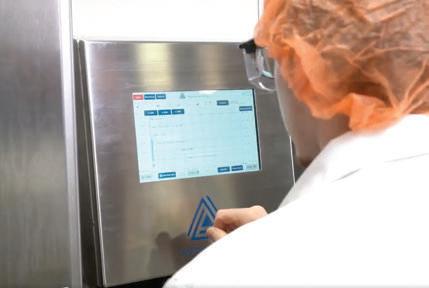

The increased capabilities of new instruments makes them more valuable tools for processors, Wesstrom adds. “The advanced diagnostics and verification tool, Heartbeat Technology, built into many Endress+Hauser instruments today, empowers food processors to perform process monitoring, conduct predictive assessments, and reduce downtime, maintenance requirements and calibrations,” he says.
Flexibility in handling di erent types of material is another important aspect of new instrumentation. Krohne, for example, has introduced a customizable capacitance level switch with IO-Link communications that o ers both high- and low-level detection, making it ideal for overfill and dry-level protection, as well as di cult materials such as adhesives. The Optiswitch 6700’s double output can be individually programmed to monitor di erent processes or media. Detection is not a ected by product buildup, foam or condensation. It also o ers maintenance-free function with an optimal sensor shape for cleaning.
www.profoodworld.com | April 2023 | PROFOOD WORLD 37
PHOTO COURTESY OF ENDRESS+HAUSER
AndersonNegele’s Paperless Process Recorder lets quality managers review and approve
s
PHOTO COURTESY OF ANDERSON-NEGELE
Tel-Tru’s Digi-Tru digital thermometers meet FDA Rule 21 CFR 113.40 requirements for temperature indicators used in retorts and the requirements of the Pasteurized Milk Ordinance.
A layering of needs
While quality and safety remain priorities, getting down into the details reveals other needs. “We are seeing a big push for increased quality and repeatability in F&B production,” says Kyle Lake, product marketing manager for process instruments at Baumer. “The safety aspect comes in a better product for the customer that has less chance of contamination. Resource conservation is another priority we see in requests for process upgrades. That could be in lowering wash and rinse times in CIP [clean in place] with a more accurate measurement or maximizing the usage of ingredients. The basic request is clear: Any new instruments need to help on multiple fronts.”
Not only are manufacturers monitoring their process more, but they are now monitoring and trying to optimize the environment around the process. “The next generation of sensors with digital communications, a reduction in physical size, and improved environmental performance allow customers to measure in places and ways they
didn’t think about before,” Lake reports, adding, “There are also more cost-e ective options today.” Manufacturers no longer need to spend thousands of dollars on pressure transmitters with proprietary connections and communications when options with modern digital communications can be adapted to several process connections. “The more information we can supply the customer, the better. This can be done by o ering a dual-channel device that o ers IO-Link and an analog signal,” Lake explains. “Using the digital IO-Link signal will allow you to monitor several process variables as well as environmental variables like temperature and power supply. This information can be gathered and studied, and the analog signal can be used for process control. Digital communications result in faster and more repeatable measurements.”
Easier regulatory compliance
Another aspect of the drive for safer production processes is the need to conform to regulatory requirements. “Customers are demanding more features related to meeting compliance in a thorough and e cient way,” explains Bill Harris, director of product management for Tel-Tru Manufacturing.
Temperature measuring instruments, such as Tel-Tru’s Digi-Tru series, are calibrated and tested with instrumentation that is fully NIST-traceable. Digi-Tru models meet FDA Rule 21 CFR 113.40 requirements for temperature indicators used in retorts, and the requirements of the Pasteurized Milk Ordinance for dairy applications. “We’ve also seen demand for faster-responding instruments to allow better control of processes,” Harris notes.

Automation is a big driver for instrumentation these days, requiring increased use of sensors and other instrumentation, Harris adds. “Processes that have been done by procedure in the past are being automated primarily to save labor. We’re also seeing higher demand for remote monitoring, allowing users to identify concerns while o site. We’re responding with more digital instruments that allow easy user interface and integration.”

TECH TODAY PROCESS INSTRUMENTS
Emerson’s Rosemount CT4215 packaging leak detection system achieves 100% product leak testing at very high line speeds.
38 PROFOOD WORLD | April 2023 | www.profoodworld.com
PHOTO COURTESY OF TEL-TRU MANUFACTURING
s s
PHOTO COURTESY OF EMERSON
Measurement in progress
Sensor switching

Process malfunction

Adjustment via smartphone $484 VEGAPOINT 24 G½" Hygienic adapter system
Individually selectable: 256 colors
We bring color into view! Compact capacitive level switches with 360° custom-color status display www.vega.com/vegapoint
Completely flush sensing element
Works on pastes and viscous media
No spray cleaning shadows
Very small installation dimensions
န
န
န
န
More powerful owmeters
Coriolis flowmeters are used to increase throughput and decrease waste and rework by measuring on a mass flow basis to ensure product quality. The meters have long been a mainstay of instrumentation for the food and beverage industry, but processors are now expecting even more capabilities.
“Customers expect new instrumentation to provide meter health diagnostics as well as feedback to the end user if the meter is working properly or it needs to be replaced,” says Anthony Gentile, senior product marketing manager at Emerson.

As an example of how Emerson is working to help processors improve process safety, the company now o ers Coriolis electronics with non-glass displays.
“Taking glass displays out of the equation ensures that glass will not find its way into the production process if the display is accidentally broken,” Gentile explains.
Technology is evolving
Emerson’s
Melissa Stiegler, food and beverage director at Emerson, points to a number of new instruments with advanced capabilities, such as the Micro Motion 1600 compact flow transmitter that includes a data historian, concentration measurement, and advanced phase measurement, along with Smart Meter Verification.
This is Emerson’s first power-over-Ethernet (PoE) transmitter and will support customer upgrades and retrofits to improve process eciency. PoE can deliver power and data over a single Ethernet cable, which means no new cabling will need to be installed, saving customers up to 50% in installation and maintenance costs. The ultra-compact transmitter can use just PoE or have a separate direct current power input, depending on wiring availability.
Many of Emerson’s new Rosemount instruments also put the emphasis on improving quality and safe-

ty, such as a non-contacting radar level transmitter with fast sweep technology and a CIP algorithm to automatically detect cleaning procedures; a packaging leak detection system that achieves 100% product leak testing at very high line speeds; and a hygienic pressure transmitter that can assure batch-to-batch repeatability when CIP temperatures have a negative impact on a processor’s pressure transmitters.
The power in data
Food and beverage processors are gaining increased appreciation for new instruments that provide additional data, enabling them to make better decisions, according to Brandon Haschke, senior product engineer at Emerson. “Now we’re seeing requests for even more analytics and data.”
With increased instrument capabilities, customers are now measuring things they might not have in the past. “A yogurt manufacturer, for example, had a di cult time understanding why there was variability in a separator after bowl cleanings,” Stiegler explains. “They used a Micro Motion flow and density meter with advanced diagnostics, which was able to determine whether they had excess solids, entrained air, or excess water or fat after the bowl cleaning.”
The food and beverage industry’s growing reliance on the quality and scope of the data they can gather from their instrumentation is helping to transform production processes and improve operational quality and e ciency.
“The industry is now understanding that ‘good enough’ is not, in fact, always good enough,” says Tom Belling, business development manager for Emerson. “That’s why we’ve continued to expand our instrumentation portfolio for food and beverage applications to include pressure, temperature, level, flow, and analytical products, giving our customers options based on their specific application needs.”
Anderson-Negele www.anderson-negele.com
Baumer www.baumer.com
Emerson www.emerson.com
Endress+Hauser www.endress.com
Krohne www.krohne.com Tel-Tru Manufacturing www.teltru.com
TECH TODAY PROCESS INSTRUMENTS
Micro Motion 1600 compact flow transmitter features Power-over-Ethernet and smart meter verification to let operators know if the meter is working properly or needs to be replaced.
PHOTO COURTESY OF EMERSON
Krohne’s Optiswitch 6700 capacitance level switch can be individually programmed to monitor di erent processes or media.
40 PROFOOD WORLD | April 2023 | www.profoodworld.com
PHOTO COURTESY OF KROHNE
s























































































































































Discover your next packaging or processing solution fast on the free PMMI ProSource directory. Find validated suppliers by using the Package Type lter, such as Flexible Bags or Rigid Bottles. Browse categories, such as Filling, Capping & Closing or Processing Equipment. Narrow down your search using lters within a category, such as Capabilities or Fill Type www.prosource.org Search by package types: Liquid Fillers (11 companies) el/budget odels r Liquid Fillers (11 companies) Fill Type Capabilities Fill by time (6) Fill by weight (7) Hot fill (11) Volumetric (9) Entry-level/budget models available (11) IIoT ready (6) Tool-less changeover (8) Entry-level/budget models available Hot Fill
MAGNETIC SEPARATOR
The magnetic separator is typically installed at bulk intakes after raw materials have undergone initial screening, in bulk outloading and di cult-to-access locations, or prior to metal detectors or processing equipment. Self-cleaning and automatic, the Mag-Ram separator can be programmed to clean before, during, and after production runs. It is available in a sanitary (dairy-grade) option, as well as with an abrasionresistance coating for dry product applications, such as meat and bone meal, cold grain, sugar, and corn kernels.

Magnattack Global | magnattack.com
DRAWER MAGNETS
Puritan Magnetics drawer magnets have multiple staggered rows of magnetic tubes that remove medium and fine ferrous contaminants in dry, free-flowing products under gravity flow. As product flows through the unit’s stainless-steel housing, ferrous contaminants are pulled to the surface of the magnets, where they move to the underside of the tube to prevent any wash o . The magnetic tubes are cleaned by releasing the latch assembly, opening the door, and removing the grate assemblies one at a time.
Puritan Magnetics | puritanmagnetics.com
VENT FILTER
Engineered to separate dust from displaced air when a vessel is filled with bulk solids, the Schenck vent filter can mount directly to a bin’s vent outlet in low-airflow situations. For gravimetric feeder applications, the Mini vent filter can be used to mitigate dust sock blinding. The filter is constructed in 304 stainless steel and available with 4- or 10-in. process connections. The hygienic version has a 3-A RPSCQC certification for (39-01) pneumatic conveyors for dry products, with components in the product contact zones constructed with FDA-compliant materials.


Schenck Process | schenckprocess.com
BULK BAG FILLER
Built for the sanitary processing and packaging of a range of powders, the Powder Process-Solutions bulk bag filler includes a suspension system for weighing bulk bags, dust-tight fill head, and inflatable bag seal ring that secures itself around the bag during filling to prevent product leakage. An impulse heat sealer is available as an option for integrated bag sealing. The fully automatic bulk unit fills in a critical-hygiene zone, and then an overhead trolley transfers the bags to be palletized in a medium-hygiene zone.
Powder Process-Solutions | powder-solutions.com
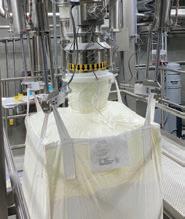
s s
NEW PRODUCTS 42 PROFOOD WORLD | April 2023 | www.profoodworld.com
s
GRATE-IN-HOUSING UNIT
Able to remove fine-particle ferrous contamination up to 0.5 in. in size from a range of dry free-flowing products under gravity flow, the Eriez grate-in-housing unit features single-skin tubes positioned in a dust-tight, all-stainlesssteel housing. Stripping bushings remove the accumulated ferrous particles as the banks are cycled from the housing. As it is stripped o each tube, the iron contamination falls down the ferrous discharge chute located outside the product flow area. The unit includes a remote mounting panel with a filter regulator, solenoid valve, and NEMA 12 pushbutton control, and comes in ceramic, rare earth, and Xtreme rare earth models.

Eriez | eriez.com
Dry Processing SOLUTIONS
BULK MATERIAL DUMPER
Featuring heavy-duty, all-stainless construction to sanitary standards or carbon-steel construction with industrial coatings and stainless-steel material contact surfaces, the Flexicon bulk material dumper discharges non-dusty, free-flowing, and/or agglomerated bulk materials from multiple drums or boxes simultaneously, or from Gaylords, totes, or bins individually. The bed of the unit’s hydraulically tipped housing accommodates containers of 37 to 44 in. in height. The open-chute dumper is available with optional receiving hoppers configured with Flexicon mechanical or pneumatic conveyors to transport discharged material to any plant location.
Flexicon | flexicon.com
F FEEDING, WEIGHING & CONVEYING. SMART TRANSFER SOLUTIONS FOR FOOD PROCESSING.




+ Innovative sanitary filter receivers ideal for quick cleaning and reliable weighing

+ High accuracy feeders for optimal ingredient delivery
+ Highly productive components ensure reliable and e cient bulk material handling


+ Integrated systems controls for all operations – including Coperion extruder
+ All systems designed in accordance with GFSI and FSMA safety standards

PMCA 2023 | Lancaster, PA/USA |
37 April 17-19, 2023 POWDER
| Rosemont, IL/USA |
1613 April 25-27, 2023 PETFOOD FORUM 2023 | Kansas City, MO | Booth 1219 May 1-3, 2023 Safe food and ingredient handling. Feeding, weighing and conveying systems provided by Coperion and Coperion K-Tron o er the highest in e ciency and safety standards for food processing. www.coperion.com/foodtransfer
Booth
SHOW 2023
Booth
> extrude extruders > feeders > components > pneumatic conveying > complete systems
s
VOLUMETRIC FEEDER
Featuring a modular design, the Vibra Screw volumetric feeder adapts to a variety of feeding applications and also can be used as the feeder component in loss-in-weight feeding applications. The Versifeeder feeder is available in screw sizes of 1 to 6 in. for rates of 0.14 to 600 ft3/hr, and in food sanitary construction for all sizes. It o ers rear screw removal, or the screw can be removed from the front, if desired. All the drivetrain components maintain their alignment and integrity during disassembly and reassembly.
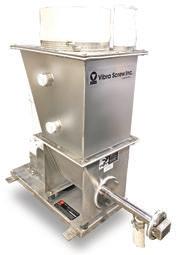
Vibra Screw vibrascrew.com
VACUUM CONVEYING SYSTEM

The Volkmann vacuum conveying system can be custom-engineered to automatically capture unused or excess ingredients from a process and return them upstream for immediate reuse or to a hopper or container for reuse at a later date. Featuring 100% stainless steel in product contact areas for sanitary processing, the VS pneumatic conveyor system captures and recycles salt, sugar, nuts, seeds, chips, berries, and other dry food ingredients.


Volkmann USA | volkmannusa.com
ONE CENTRAL VACUUM SYSTEM.
Ȏ 0D[LPL]H\RXU R Ȏ�0D[LPL]H�\RXU�RXWSXW�ZLWK�OHVV�LQSXW�
• Easier and faste • faster maintenance
Ȏ ,PSURYHG ZRUNL Ȏ�,PSURYHG�ZRUNLQJ�HQYLURQPHQW
Ȏ +LJK HQHUJ\VDY Ȏ�+LJK�HQHUJ\�VDYLQJV
83�72
/RRNLQJ�WR�VDYH�HQHUJ\�DQG�PRQH\"�2XU�H[SHUWV�FDQ�KHOS�\RX�XQORFN�XS�WR����� VDYLQJV�ZLWK�D�FHQWUDO�YDFXXP�V\VWHP��From there, we’ll work together to identify DGGLWLRQDO�EHQHↅWV�WDLORUHG�VSHFLↅFDOO\�IRU�\RXU�QHHGV��/HW�XV�VKRZ�\RX�KRZ�
������6FDQ�45�&RGH�IRU�PRUH�LQIRUPDWLRQ�

NEW PRODUCTS Dry Processing SOLUTIONS
&RXQWOH &RXQWOHVV�EHQHↅWV� 1-800-USA-PUMP ��info@buschusa.com ��EXVFKXVD�FRP
৶৯� (1(5*<� 6$9,1*6�
s
INTELLIGENT MAGNET
The MPI intelligent magnet self-monitors the ferrous contamination of incoming ingredients, detects equipment malfunctions, cleans fully saturated magnets before metal events occur, logs system data, and generates customized reports for quality compliance initiatives. Once an Intell-I-Mag magnet reaches the designated level, it notifies plant personnel of the required cleaning or can activate the automated self-cleaning system.
MPI | mpimagnet.com





VIBRATORY TRAY FEEDERS


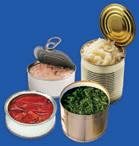
Coperion K-Tron vibratory tray feeders include patented load cells, pendulum drive technology, and a controller for feeding materials, such as nuts, candy pieces, dried vegetables, and heat-sensitive chocolate chips. All the product contact parts are made of stainless steel or FDA- and EC 1935/2004-compliant materials. The K3 hygienic design loss-in-weight feeders achieve rates of 0.035 to 300 ft3/hr, and have a modular design that allows custom tray designs for feeding into blenders or packaging lines.
Coperion coperion.com
+1.914.968.8400 • www.GRAPHALLOY.com Can your bearings standup to harsh washdowns? Can your bearings standup to harsh washdowns? GRAPHALLOY® bearings. Self-lubricating. Maintenance-free. • Withstand harsh, corrosive washdowns • Self-Lubricating • F DA Acceptable • Can operate submerged • Reduce maintenance and downtime • Withstand temperatures up to 1,000˚F (535˚C) Contact us today to discover the benefits of Graphalloy maintenance-free bearings. Yonkers, NY USA F2
www.profoodworld.com | April 2023 | PROFOOD WORLD 45
PRESSURE VESSELS

Used as a part of pneumatic conveying systems, Gericke twin pressure vessels permit conveying in facilities constrained by low ceilings, tight footprints, existing equipment, and other restrictions on space. Set side by side, the twin vessels are loaded with powders, pellets, granules, and other bulk materials from a single point via a diverter valve. Compatible with the Gericke STP 61 dense-phase pneumatic conveying system controller, they are o ered in an optional hygienic version for transferring milk powder and other materials that require extra protection from contamination.
Gericke USA gerickegroup.com

PACKAGING MACHINE



Suitable for a wide range of packaging formats, the Syntegon packaging machine packages ground co ee and whole beans in block bottom bags, providing full-corner sealing. The flexible PMX machine has a modular concept and aroma protection valves made from mono-materials. The single-tube variant packages 340 g of co ee beans at a speed of 65 bags/min. The packaging machine can be used with Synexio Empower, a Smart Machine Industry 4.0 solution that monitors energy and resource consumption through condition monitoring, data acquisition, and visualization in real time.
Syntegon Technology | syntegon.com






NEW PRODUCTS Dry Processing SOLUTIONS Mechanical & Electromagnetic Conveyors •Low profile models •Wide range of screener options •Models for every application Feeders & Conveyors Eriez.com | 814.835.6000 •Energy e cient electromagnetic drives • High Speed models for rapid On/O cycling •High Deflection models for fine powders, leafy, and sticky products for Challenge Every ERIEZFeeder_ConveyorsAd_PROFW_4_23.qxp_Layout 1 3/20/23 11:00 AM Page 1
s
DRAWER MAGNET
The Industrial Magnetics drawer magnet can be placed before and/or after mechanical conveyors. The drawer magnet has rows of round magnetic tubes that are assembled into drawers and are aligned on alternating centers. As product flows into the top of the housing, it is forced to cascade in a zigzag pattern from row to row over the magnetic tubes, ensuring tramp metal capture. When the ferrous metal passes through the magnetic field, it is held to the tubes and separated from the product.
Industrial Magnetics | magnetics.com












FLEXIBLE SCREW CONVEYORS

AFC Spiralfeeder flexible screw conveyors feature a choice of spiral types for material transfer when conveying powder, pellet, flake, or other bulk material. The round spiral shape minimizes friction for transferring sensitive material with a gentle conveying action, while the flat spiral shape acts as a rotating shelf to transfer large volumes of materials with low bulk densities at high flow rates. The knife-edge spiral shape transfers materials that cake, pack, stick, or smear. The spirals are made of carbon steel or optional stainless-steel construction, and can be specified in a range of lengths.
Automated Flexible Conveyor | afcspiralfeeder.com


What Matters
Creating value in food ingredients through membrane Ƽ�PXVEXMSR��IZETSVEXMSR�
�HV]MRK� Plant Proteins | Food Ingredients | Fermentation |�)R^]QIW�| Yeast | Amino Acids visit �OSGLWITEVEXMSR�GSQ� • �VIPGS�RIX
Extract
TERMINAL BLOCK
The Wago terminal block has lever technology, allowing easy wiring for cross-sections from 26 to 14 AWG. Capable of being connected vertically or horizontally to a PCB, the 2601 Series tool-free terminal block has a pin spacing of 3.5 mm. Pushin cage clamp technology allows connecting solid and fine-stranded conductors by simply pushing them into the block. Levers ensure the contact point is secure.




Wago | wago.com
s OPTICAL SORTER
Used for fresh market potatoes or whole potatoes prior to processing, the Key Technology optical sorter features a 64-bit operating system and cameras that identify smaller, harder-to-detect defects. The Herbert Oculus sorter conveys potatoes over a series of rollers to present a 360-degree view of each tuber to the digital infrared color cameras. Available in multiple sizes for capacities up to 88,000 lb/hr of product, the sorter recognizes size, shape, color, and texture, and removes a range of color defects, diseases, and surface abnormalities, including skin discoloration, green and dark colors, bruising, mechanical damage, blackleg, and silver scurf.

Key Technology | key.net
MULTI-SHAFT MIXER
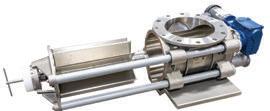
Customized for shear-sensitive applications with low to medium viscosity, the Ross multi-shaft mixer features a two-wing anchor agitator with Teflon scrapers and two medium-speed agitators, each fit with five rows of threeblade pitched turbines and driven independently by explosion-proof inverter-duty motors. The Model CDA-200 mixer has two portable stainless-steel mixing vessels and transport covers for semi-continuous operation, a 4-gal charging hopper for introducing ingredients to the batch, and a thermoprobe for accurate temperature readings.
Charles Ross & Son mixers.com
DISMOUNTABLE AIRLOCK
The Schenck dismountable airlock is intended for applications where dry raw or finished products are handled in the process and inspection or system cleanout is required. USDA Dairy certified, the Global Hygienic blow-through airlock incorporates seals and product contact surfaces that meet food safety requirements. It has a 32 Ra surface finish on all wetted and primary food contact surfaces, and a casting exterior surface free of pits and porosity. The endplates provide access to the seal area for cleaning or seal replacement.
Schenck Process | schenckprocess.com

PLANT FLOOR NEW PRODUCTS 48 PROFOOD WORLD | April 2023 | www.profoodworld.com
s s
VALVE INDICATION UNIT
Enabling 360-degree LED visual status indication, the Alfa Laval valve indication unit also provides automation, digitalization, and real-time communication, as well as control room monitoring of the real-time status of Alfa Laval hygienic valves. The ThinkTop V20 hygienic unit is commissioned by installing, activating, and deactivating it. Sensors automatically recognize the valve type and size, calibrate and record valve opening and closing distances, and complete setup without manual interaction. Using the point-to-point IO-Link communication protocol allows the connection of the sensors to automation systems.
Alfa Laval | alfalaval.us


SIMULATION SOFTWARE

Mitsubishi Electric Automation simulator software allows users to visualize the design and construction of manufacturing projects as they introduce new automation components to their facility. Melsoft Gemini 3D simulator software operates using a PC-based 3D digital space and connects directly to factory devices to test and debug the automation logic for machines and systems, and to check the operation of the planned production facility prior to construction. As projects advance into operation and maintenance phases, users can identify the causes of abnormal occurrences in the production line using logged data to review the error event on the synchronized 3D model, PLC sequence monitor, waveform display, and/or video data.

Mitsubishi Electric Automation | mitsubishielectric.com

IS YOUR PROCESS HURTING PROFITS? STERLING SYSTEMS AND CONTROLS, INC. AUTOMATION, BATCHING & WEIGHING SPECIALISTS 815-625-0852 • sci@sterlingcontrols.com • www.sterlingcontrols.com Full custom solutions that are designed with your operational processes in mind. The technology and experience to increase efficiency and profits. Material Weighing/Batching Process Control/ Automation VISIT US AT BOOTH 1735
www.profoodworld.com | April 2023 | PROFOOD WORLD 49
FUME HOOD
Compact in size, the Hemco fume hood is equipped with a vector-slotted rear ba e system. The UniFlow CE AireStream full-duty laboratory fume hood is o ered in 30-, 36-, 48-, and 72-in. widths and is constructed totally of composite resin for chemical resistance. Available with or without an exhaust blower in standard or explosion-proof models, it can be equipped with a variety of accessories to meet specific process needs.

Hemco | hemcocorp.com

Innovate today for a new tomorrow
Realize your vision with Festo’s approach to smart automation for food processing and packaging. Partner with Festo today.

CUTTING MACHINE

O ering a capacity up to 17,600 lb/hr, the Kronen cutting machine cubes, strips, and slices fruit, vegetables, and other foods. The KUJ HC-220 cutting machine is suitable for processing products with a diameter of 3.5 to 8.67 in. Optional cutting inserts facilitate the production of extremely thin slices and strips, as well as fine cubes. The machine also can be optionally equipped with a belt infeed and belt outfeed for continuous processing.
Kronen | kronen.eu
Industry Leadership
Superior Quality Products
Global Training & Support
PLANT FLOOR NEW PRODUCTS
www.festo.us
50 PROFOOD WORLD | April 2023 | www.profoodworld.com
s
LOW-PROFILE CONVEYOR
Available in a range of lengths and widths, the Dynamic Conveyor low-profile conveyor includes a tensionless link-style belting, variable speed, reversing, a nose bar design for tight transfers, and an M12 connector for machine integration. The DynaPro low-profile slider bed conveyor can be used for a range of applications, such as completing transfers of all sizes, as a takeaway conveyor, or with pick-and-place robots.

Dynamic Conveyor | dynamicconveyor.com

COMPLETE SNACK FOOD SOLUTIONS


•Potato and vegetable preparation
•Frying and oil management

•Drying and roasting
• 7IEWSRMRK�ERH�ƽ�EZSVMRK
•Conveying and product handling


•Weighing, bagmaking, and casepacking
•Foreign object and defect inspection


• Controls and information systems

We are successful when you are successful. That’s why we apply creativity, engineering excellence, and determined perseverance to every project to help our customers get the performance their business demands— [LIXLIV�QIEWYVIH�F]�ƽ�EZSV��Iƾ��GMIRGMIW�� sustainability, improvement, or innovation.
LEVEL TRANSMITTER
The Krohne level transmitter o ers continuous monitoring of refined edible oil level in closed tanks or open air. The Optiwave 5400 two-wire, 24 GHz radar (FMCW) level transmitter o ers non-contact level measurement and provides the readings directly to the control room. Providing a measuring range of 0 to 328 ft, the transmitter can be equipped with a 316L metallic horn antenna or PP drop antenna.
Krohne | us.krohne.com
info@heatandcontrol.com | heatandcontrol.com

91 97 98 34 108 94 116 102 1 17 93 12 32 99 36 41 1 42 0842 ~2~ ~2 56 3 9 Apr. 04-06, 2023 Booth 304 Portland, Oregon USA Helping you bring your best products to market. Delivering Results. With Heat and Control, you have a partner with the scale to support your success, the innovation to advance your operations, and a commitment to quality that will help you offer better products for consumers.
LOOKING BACK. PRESSING FORWARD. ALWAYS INNOVATING.
www.profoodworld.com | April 2023 | PROFOOD WORLD 51 s
HEAT EXCHANGER
The HRS heat exchanger has smaller tubes to allow more tubes to be fitted, while reducing the overall size of the unit. Suitable for a range of low-viscosity applications, the C Series compact multi-tube heat exchanger features corrugated tube technology to increase heat transfer and thermal e ciency. The C Series is manufactured from stainless steel with standard connection types. Other materials of construction are available.
HRS Heat Exchangers | hrs-heatexchangers.com

s COMBINATION MACHINE
The compact Fortress Technology machine features a fully integrated checkweigher and metal detector, as well as a hygienic conveyor. Using feedback from the DC brushless motors and optical sensors, the Raptor Combination machine o ers real-time inspection and weight checking of products and pack formats weighing 1.76 oz to 17 lb, measuring up to 400 mm in length. The modular electronics provide feedback upstream to filling, portioning, and packing automation equipment, signaling when to increase or decrease fill quantity. The conveyor run-only mode enables manual control of the belts and running the metal detector with independent control of its reject and reject monitoring. Two lockable bins separate weight and metal contaminant rejects.

Fortress Technology | fortresstechnology.com
POWER SUPPLIES
Featuring a built-in EtherCAT interface, Beckho power supplies can remotely collect measurement and device diagnostics for comprehensive system monitoring, allowing the control system to directly process measurement data and internal device diagnostics information and establish remote access to power supplies. The PS 2000 power supplies have advanced monitoring features for DC output (for system monitoring) or AC input (for source monitoring). Voltage, current, and temperature data can be added to the monitoring scope. Status information, error messages, and warnings also are available directly in the control platform via EtherCAT.

Beckho Automation | beckho .com
BELTED CONVEYOR
Built for material handling applications, such as logistics, packaging, and palletizing, the Dorner belted conveyor includes controller technology, a 24 VDC brushless gearmotor mounted inside the tails to reduce the DCMove conveyor’s footprint, and 3-in. diameter rollers with a 1.25-in. nose bar option to handle smaller packages. Plug-and-play iDrive v2 configurations allow users to select the best control methods for their application, ranging from a readyto-run conveyor to a flexible control for integration with PLCs via a variety of communication protocols, including Ethernet.

Dorner | dornerconveyors.com

52 PROFOOD WORLD | April 2023 | www.profoodworld.com PLANT FLOOR NEW PRODUCTS
s
POWER SUPPLIES
Engineered for electrical panels, Carlo Gavazzi power supplies include three frame sizes from 75 W with 32-mm width to 480 W with 48-mm width. The SPDE single-phase DINrail supplies feature a universal input voltage range of 90 to 264 VAC, 120 to 370 VDC; a 12, 24, or 48 VDC output voltage range; and output power from 75 to 480 W. CE, UKCA, UL61010, and UL62368 certified, they provide integrated diagnostic and protection functions, such as output short circuit, overcurrent, overvoltage, and overtemperature.

Carlo Gavazzi | gavazzionline.com


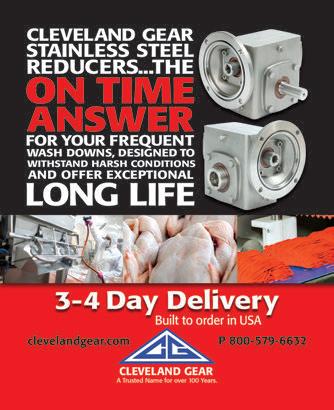
I/O INTERFACE SOFTWARE



Emerson I/O interface software can replace any legacy system with a new DeltaV distributed control system, while leaving the existing I/O infrastructure in place. No legacy vendor software is required for configuration and maintenance of I/O. Once the DeltaV IO.Connect I/O interface is installed, and the plant is running new control technologies, technicians can update I/O on their preferred schedule while the plant runs. The solution is provisioned as a subscription software component of the Emerson Guardian Support o ering.
Emerson | emerson.com
www.profoodworld.com | April 2023 | PROFOOD WORLD 53
ANDERSON-NEGELE.COM Since 1930 Hygienic Sensors and Systems for Dairy, Food & Beverage, and Brewing
TRANSFER SYSTEM
Designed for conveyor lines requiring a zero tangent 180- and/or 90-degree curve, the Rexnord transfer system o ers a 420-mm inner radius and 15-mm transfer. The Curve System enables head-to-tail transfer of even small and light cases without the need for micro pitch conveyors, transfer modules, or plates. The small nose radius across the width of the conveyor and small transfer result in a safe gap between the system and the adjacent conveyor. Using multiple industry standard-width chain strands, the drop-in solution can be integrated into existing conveyance systems.

 Regal Rexnord | regalrexnord.com
Regal Rexnord | regalrexnord.com
ROTARY RETORTS
Designed for heat-sensitive products, including milk-based beverages and soups, Surdry rotary retorts turn cans, jars, pouches, and other containers during sterilization and cooling processes. They can also operate in an oscillating mode to accommodate products that do not require full rotation. The retorts have a robust design for clamping baskets or stacks of trays individually. Divider pads made of perforated plastic material are set between the layers of packaging. The retorts are available in 1,400- to 1,700-mm vessel diameters, and feature a maximum five-basket capacity.
Surdry North America | surdry.com

Eagle’s Making Headlines for Bone and Metal Detection

Eagle has big news for you! Our One Minute video series will give you a fresh look at why Eagle has become the top resource for x-ray inspection and fat analysis systems. You’ll see what’s behind the Eagle headlines for food safety and quality assurance.
With PXT™, the next level of dual energy inspection, you’ll get superior contaminant detection and higher quality products, all at a lower cost of ownership.
Learn more. Watch our One Minute Videos.
54 PROFOOD WORLD | Month 2021 | www.profoodworld.com
Eagle Minute Videos
www.eaglepi.com/PoultryMinute www.eaglepi.com/MeatMinute
s s
DIGITAL PLATFORM
The Ecolab digital platform simplifies food safety and quality by turning manual FS&Q data collection into proactive issue mitigation and actionable insights. The Food Safety and Quality (FSQ) Supervisor web-based platform records sampling and testing; provides automated alerts for adhering to testing standards and instructions for critical control points; automates internal, audit, and quality reporting; and o ers a bird’s-eye view of sample points. Interactive dashboards share relevant analytics with authorized users.

Ecolab | ecolab.com
TEMPERATURE TRANSMITTER
Engineered for analog 4 to 20 mA signals, the Endress+Hauser temperature transmitter is available with push-in terminals or in the classic screw terminal format. The iTemp TMT31 RTD transmitter is approved for safe operation in Zone 2/Div. 2 hazardous areas (non-sparking) in accordance with ATEX and CSA C/US standards, along with Pt100 and Pt1000 sensors. The sensor adjustment parameter in the head transmitter can be modified according to Callendar-Van Dusen (CvD) equations to match the connected RTD sensor characteristics.




Endress+Hauser | us.endress.com

INDEXING PLUNGER
Pneumatically actuated, the JW Winco indexing plunger detects both end positions, and can individually define them, with a single sensor. Upon reaching the respective end positions, the high signals are transmitted directly over the four-pin M8 cable plug to the control unit of the system. The GN 817.7 indexing plunger is made of stainless steel and comes in four plunger diameters and three functional variants. It operates with pressures of 4 to 6 bar, while the IP 67-compliant sensor emits DC signals of 12 to 30 V.
JW Winco | jwwinco.com
www.profoodworld.com | April 2023 | PROFOOD WORLD 55
PLANT FLOOR NEW PRODUCTS
800.423.4585 info@claytonindustries.com www.claytonindustries.com SAVE FUEL SAVE TIME SAVE MONEY ▲▲ ▲ HIGHEST EFFICIENCY BOILERS WITH LOWEST COST OF OWNERSHIP CLAYTON STEAM BOILERS HIGHEST EFFICIENCY BOILERS WITH LOWEST COST OF OWNERSHIP
Rethinking Inspection Strategy After Adding Packaging Lines
Bringing retail packing in-house prompted a family-owned nut producer to add X-ray inspection along with its new packaging equipment. With an enhanced user interface and improved detection levels, Mettler-Toledo Safeline’s X36 X-ray system is helping to ensure food safety.
WHEN ONE OF YOUR LARGEST retail customers tells you they want you to start packaging your products in addition to processing, you’re not likely to say no. You find the equipment needed and step up your game.
This is the situation that Andersen & Sons Shelling—a fourth-generation, family-owned-and-operated nut producer founded in 1904—found itself in a few years ago. Andersen produces tree nuts that go to market nationwide, as well as internationally, under both private labels and the company’s own Glenda’s Farmhouse brand.
“Prior to 2017, we were sending all our nuts in bulk to contract packers that produced retail packs for our customers,” says Mike Andersen, owner and vice president of sales at Andersen. “When

one of our biggest retailers told us they were having problems with their contract packer, they asked us to start private label retail packaging our nuts in addition to processing.”
At its facility in Vina, Calif., Andersen handles walnuts, almonds, macadamia nuts, cashews, hazelnuts, pecans, and more packaged into a variety of retail packs. The company has recently been growing 15 to 20% per year, and now processes about 125 million lb of nuts annually.
Moving to filling those retail packs in-house required not only Andersen’s first retail packaging lines; the company needed to rethink how it was handling inspection as well. Graders and optical sorters were (and still are) being used further upstream in the process, but adding X-ray inspection after packaging was an essential step to ensure product safety for consumers.
Finding the rocks
“Rocks are a huge concern in our industry. When harvesting nuts, each tree is shaken so the nuts fall on the ground and are then mechanically gathered. But inevitably, some rocks get scooped up as well,” says Mallory Daily, food safety manager at Andersen. “This means that a metal detector won’t cut it now that we’re responsible for ensuring final product quality on retail packs.”
X-ray technology is even more essential in certain situations. “The medium pieces of walnuts are more prone to having smaller rocks that are more di cult to detect with optical sorting and can’t be detected with metal detection,” says Ryan Bughao, director of operations at Andersen. “So having the X-ray in line helps definitely reduce the amount of foreign materials that are getting out to the end users.”
Andersen purchased its first metal detector from Mettler-Toledo Safeline more than 20 years
56 PROFOOD WORLD | April 2023 | www.profoodworld.com AARON HAND | EDITOR-IN-CHIEF CASE STUDY ANDERSEN & SONS SHELLING
PHOTO COURTESY OF METTLER-TOLEDO SAFELINE
Andersen and Sons Shelling produces a variety of tree nuts that go to market under both private labels and its Glenda’s Farmhouse brand.
ago, and now works only with Mettler-Toledo for its inspection equipment. So when it came time to get X-ray equipment, it was Mettler-Toledo that the nut producer called on again. “We bought four Safeline X33 X-ray systems over the last few years,” Andersen says. “Then in 2021, our sales rep, Neil Ertmer of Bay Area Packaging, recommended the advanced X36 for our new retail line.”
After the nuts come to Andersen from the grower, they go through sorting and sizing, along with removal of foreign material that’s inherent from the field, Bughao describes. “Then they all go through a pasteurization step and then go to the packaging equipment to get packaged into the pouches.”
Andersen’s new X36 X-ray inspection system is installed on a retail packaging line inspecting nuts in polyethylene pouches of 8 to 40 oz. It can inspect up to 125 packages per minute, but Andersen is currently averaging 58 packages per minute. Good products are conveyed downstream to be cased, palletized, and shipped out, and any out-of-tolerance bags are removed from the line with a Mettler-Toledo pneumatic pusher reject device and then inspected by Andersen’s quality control team.
High inspection sensitivity
The level of detection of the X36 is superior to the X33, according to Bughao. “Tree nuts are a particularly di cult product for most X-rays to inspect because their density is so close to that of a rock, which is our biggest foreign material concern. We’ve turned our X-ray systems’ sensitivity way up so we can detect even the tiniest stones and other small foreign material,” he says. “The X36, in particular, is incredibly e ective. It’s able to find contaminants far beyond most other systems on the market. Once it even found a tiny wire that a nut had grown around.”
With the sensitivity turned up so high, it’s important that the settings of the inspection system are tuned in to the nuts being tested to help avoid false positives. “You just have to pay attention to your settings and make sure they’re set how the Mettler technician recommends and set up during commissioning,” Bughao explains, noting that rejects will go through the system again. “We pass them through a couple more times, just confirming
that they’re actually foreign material, and then they get dumped and hand sorted to find what the foreign material is. This allows the team to challenge the X-ray and look at upstream processes to see what can be changed to prevent that from even getting that far down the line.”
Driven by recipe-based programming, the X36 has separate recipes for each type of product in each package size to ensure the most accurate inspection. It takes only a couple of minutes to select the right recipe, calibrate, run the test strips, and start up the line. The X-ray system is password protected with di erent levels of access to ensure a worker doesn’t accidentally make changes.

One benefit of the X36 over previous models, Bughao says, is a more natural user interface. “The X36 is easy to operate,” he says. “Anyone who has used a smartphone can operate the intuitive touchscreen display. It even shows an X-ray image of each rejected bag with a little square depicted around the out-of-tolerance section, so our QC employee knows where to look when they open the bag.”
Andersen’s packaging room can reach over 100°F in the summer, so the nut producer added an optional Mettler-Toledo air conditioning unit to its X36 to ensure that it would continue to run even in very hot temperatures. “We haven’t had a single overheating issue on our X36, which is no small feat considering the challenging environment,” Bughao says.
With demand for its products continuing to grow, Andersen & Sons is building a 900,000-sq-ft facility, giving the company room to add more retail packaging lines. “We’ve already purchased another X36 X-ray system for the new facility to inspect final product quality,” Andersen says.
www.profoodworld.com | April 2023 | PROFOOD WORLD 57
Mettler-Toledo Safeline www.mt.com/pi
PHOTO COURTESY OF METTLER-TOLEDO SAFELINE
Through the X36’s user interface, an operator inspects the contents of a bag and reviews the limits of the run.
Collaborative Development Through a Global Lockdown—and Beyond
When the pandemic brought travel to a halt, a Spanish multinational snack maker was able to keep R&D going with its partners across the Atlantic, and do so securely.

SINCE THE COVID-19 pandemic brought with it a slew of challenges on its own, it might be easy to forget what hurdles the food and beverage industry was already trying to overcome before being hit by lockdowns, labor issues, and supply chain calamities. Margins were already tight, making uptime essential. And climate change was already creating di culties in the supply chain.
For Leng-d’Or, a Spanish multinational food company, supply chain headaches were already an issue, making supplies of raw materials like corn and flour less reliable. Leng-d’Or makes food pellets that are sold to other companies to make snack foods. Though it is unlikely a company that many consumers are familiar with, its products show up in a lot of the more familiar brands we snack on.
Always looking to innovate, updating recipes and changing formulas, Leng-d’Or has its scientists in Europe traveling several times a year to the U.S. to collaborate on new products. The company’s headquarters are in Barcelona, Spain, and all of its
researchers are in Barcelona as well. “But we have big facilities in the States, and one of the biggest snack facilities in the world in the state of New Jersey,” describes Enric Cuixeres, head of information technologies for Leng-d’Or. And then came strict lockdowns at the start of the pandemic. “Our first problem was that we couldn’t travel into the United States because they had closed the borders.”
This drastically changed how Leng-d’Or operated. “Our concern is that we’re continuously developing new products—every day, every month—and we are doing tests, almost two or three each week,” Cuixeres says. “We are trying to develop new products and flavors, testing new packaging.”
Keeping collaboration lines open
As luck would have it, Leng-d’Or had, just a few months before the lockdown, bought a RealWear augmented reality solution integrated with a suite of Webex capabilities from Cisco. Although they hadn’t really made use of the technology yet, at that point, they jumped in with both feet.
“When the States completely closed, we sent the RealWorld tool to our facilities in the states, and we used this augmented reality technology also with our cameras,” Cuixeres explains. “It was a very good thing for us because, without this technology, maybe we could not develop new products in the States.” He further explains that it’s advantageous for Leng-d’Or to develop products in the U.S. for patent reasons, and also to distribute products more readily to North American customers.
With the use of Webex Expert on Demand for RealWear and Cisco Meraki for smart cameras and sensors, Leng-d’Or experts in Spain could lead real-time changes to their machines in New Jersey. They could also collaborate with their U.S. counterparts in real time through the Webex app,
58 PROFOOD WORLD | April 2023 | www.profoodworld.com AARON HAND | EDITOR-IN-CHIEF CASE STUDY LENG-D’OR
Spanish multinational Leng-d’Or makes food pellets that are sold to other companies to make snack foods.
PHOTO COURTESY OF LENG-D’OR
exchanging drawings and formulas.

“In addition to traditional video collaboration, we were facing the need to integrate live images as well as very specific views of our machines,” Cuixeres says. “To do this, we decided to integrate the video stream of the Meraki MV smart cameras and Webex Expert on Demand in RealWear in a private Cisco Webex room. Thanks to this action, we were able to have a complete global picture of the whole process in real time.”
Having eyes and ears on the front line (audio and video are fully integrated) gave Leng-d’Or scientists in Spain very specific images of what they needed. “We could have a front-row worker with a tool. And we could show and guide a colleague in another part of the world, inside a plant,” Cuixeres describes. “The expert could talk in real time with the worker, seeing the same things that they see. You could share content with the front-row worker. Or the front-row worker could take a snapshot and you could draw over the snapshot and help your colleague.”
The benefits came quickly. “During the first and second months of hard lockdown, we were learning how to use this kind of technology,” Cuixeres notes. Though they had the technology in hand before COVID hit, they hadn’t spent much time using it. During the first couple months, projects were delayed one or two weeks as the team got up to speed. “But with that little delay, we could continuously develop and work as usual.”
Secure connections
Leng-d’Or has integrated several di erent Cisco products together within its operations to make everything work e ciently. Along with a range of Webex applications and Meraki Vision Cameras integrated with RealWear 3D Glasses, the deployment included SecureX cloud technology. With end-toend security spanning its network, cloud, email, and endpoints, it kept the company secure as its international supply chain went remote.
The security needed around the solution that Cisco put together for Leng-d’Or is particularly important when considering the need to secure the intellectual property being shared between Barcelona and New Jersey and then through a patent process. “The security is a must for us,” Cuixeres says. “We think that the trust between our customers and us as a company is one of the most important things. We are trying to create products every week. We are changing our industrial process, we are modifying our industrial machines.”
Leng-d’Or has to keep its guard up to protect that information. “The companies that are developing
new things, usually the attackers, they are trying to phish us, they are trying to steal our information,” Cuixeres says. “So protecting our employees from the phishing attacks is very, very important to us.”
With Cisco SecureX, Leng-d’Or can detect a security breach in real time. “Leng-d’Or reduced the time to detect threats by 90% thanks to the single pane of glass provided by Cisco SecureX,” Cuixeres says. “During a one-week period, there were between two and five confirmed threats blocked.” During the same period, the system also blocked four to six malicious URLs from inbound email and two to four malicious URLs from the Cisco Umbrella virtual appliance or roaming client.
On beyond the lockdowns
Though Leng-d’Or could have easily lost contracts if it hadn’t been able to deliver for its customers, ultimately, the pellet maker’s customers didn’t even know it was using these kinds of technologies because development carried on seamlessly.
Despite the lift in travel bans, benefits of the technology continues for Leng-d’Or. Cuixeres points to a whiteboard feature that the company’s researchers continue to use every day. “Employees are always sharing the content, then sending the final results of brainstorming to the cloud,” he says.
And, like many executives and technicians who found, during lockdown, that they didn’t really need to travel as much as they had been previously, Leng-d’Or has taken advantage of its newfound capabilities to stay put a bit more. “During the lockdown, it was very good for us because we could do exactly the same job without traveling. But after the pandemic, we learned that we could apply a hybrid work model,” Cuixeres says. “We’re traveling 50 to 60% less than before the pandemic.”
The time and money savings for Leng-d’Or is significant. But it’s also a di erence in quality of life. “For employees, they could stay with their families, with their kids,” Cuixeres says. “When you fly from Europe to the States, you usually stay more than a week.”
Cisco www.cisco.com
Leng-d’Or is continuously developing and modifying products, requiring a close collaboration between R&D headquarters in Spain with production in the U.S.
www.profoodworld.com | April 2023 | PROFOOD WORLD 59
PHOTO COURTESY OF LENG-D’OR

















Secure your booth space today at packexpoeast.com Connect With High Quality East Coast Buyers New Buyers: 81% of PACK EXPO East attendees attended no other PACK EXPO event in 2022 - making this the place to be in 2024 to connect with East Coast Buyers. Ready to Buy: 72% of attendees have purchasing power. Key Titles: Nearly half of attendees hold management and C-level titles. One Powerful Region: 72% of exhibitors expect to sell their products or services due to exhibiting at PACK EXPO East. Have questions? Contact us at 571.612.3200 or sales@pmmi.org Your East Coast Connection for Packaging and Processing
ProFood World® (ISSN 2476-06760, USPS 22310) is a registered trademark of PMMI, The Association for Packaging and Processing Technologies. ProFood World® is published 7x a year (February, April, June, August, September, October, December) by PMMI Media Group, 401 North Michigan Avenue Suite 1700, Chicago, IL 60611; 312.222.1010; Fax: 312.222.1310. Periodical postage paid at Chicago, IL, and additional mailing offices. Copyright 2023 by PMMI. All rights reserved. Materials in this publication must not be reproduced in any form without written permission of the publisher. Applications for a free subscription may be made online at www.profoodworld.com. Paid subscription rates per year are $55 in the U.S., $80 Canada and Mexico by surface mail; $130 Europe and South America. $200 in all other areas. To subscribe or manage your subscription to ProFood World, visit ProFoodWorld.com/subscribe. Free digital edition available to qualified individuals. POSTMASTER: Send address corrections to: ProFood World, 401 North Michigan Avenue, Suite 1700, Chicago, IL 60611. PRINTED IN USA by Quad Graphics. The opinions expressed in articles are those of the authors and not necessarily those of PMMI. Comments, questions and letters to the editor are welcome and can be sent to: ahand@pmmimediagroup.com. We make a portion of our mailing list available to reputable firms. If you would prefer that we don’t include your name, please write us at the Chicago, IL address. Volume 7, Number 2.
COMPANY / WEBSITE PAGECOMPANY / WEBSITE PAGE AD INDEX Anderson-Negele 52 www.anderaon-negele.com Busch Vacuum Solutions 44 www.buschusa.com Clayton Industries, Inc. 55 www.claytonindustries.com Cleveland Gear Company 52 www.clevelandgear.com Coperion K-Tron 43 www.coperion.com/foodtransfer Eagle Product Inspection 54 www.eaglepi.com Eriez 46 www.Eriez.com Festo Corporation 50 www.festo.us Flexicon Corporation COV-2 www.flexicon.com GEA 1 www.gea.com/unitedstates Gericke USA, Inc. 2 www.GerickeGroup.com Graphite Metallizing Corp. 45 www.graphalloy.com Hapman 15 www.hapman.com Heat and Control, Inc. 51 www.heatandcontrol.com Hydro-Thermal Corporation 18 www.hydro-thermal.com Industrial Magnetics, Inc. 8 www.magnetics.com ITW Pro Brands 27 www.itwprobrands.com Klockner Pentaplast, Food Packaging 5 www.kpfilms.com Koch Separation Solutions 47 www.kochseparation.com Linde 17 www.lindefood.com/innovations Lubriplate Lubricants Company 35 www.lubriplate.com Munson Machinery Co. Inc. 7 www.munsonmachinery.com Perfex Corporation 22 www.perfex.com PMMI ProSource 41 www.prosource.org/prosource PACK EXPO East 2024 60 www.packexpoeast.com PACK EXPO Las Vegas 2023 COV-3 www.packexpolasvegas.com PPWLN Learning Circle 62 www.pmmi.org/ppwln ROSS Mixers 11 www.mixers.com/ribbon-blenders SEW-EURODRIVE, Inc. COV-4 www.seweurodrive.com Steamericas - Optima Steamer 19 www.steamericas.com Sterling Systems & Controls, Inc. 49 www.sterlingcontrols.com Stolle Machinery Company 45 www.stollemachinery.com/PRC Urschel Laboratories, Inc. 33 www.urschel.com VDG (Van der Graaf) COV-1 www.vendergraaf.com VEGA Americas 39 www.vega.com/vegapoint Vibra Screw Inc 13 www.vibrascrew.com Wire Belt Company of America 25 www.wirebelt.com
www.profoodworld.com | April 2023 | PROFOOD WORLD 61
NEW QUARTERLY LEARNING CIRCLE WEBINAR SERIES
Join us on March 21 at 1pm for a 30 minute discussion about how understanding finances can lead to career advancement.
LEARNING CIRCLE WEBINARS WILL HELP YOU:
| Gain insights from subject matter experts.
| Hear from peers and discover answers to common challenges.
| Learn how to strengthen a career in packaging and processing.
The PPWLN Learning Circles are an interactive extension of the digital resource: Connect, Share, Inspire: Voices of Women in Packaging and Processing These Learning Circles will outline five key skill sets: business acumen, networking, negotiation, emotional intelligence, and communication.

Learn more at pmmi.org/ppwln and stay connected with us on LinkedIn.
NOW
RSVP
Connecting Machine Data Into Actionable Information
With a sweet spot in the proteins sector, Novolyze’s platform brings data from throughout manufacturing into one view to help improve e ciencies and sustainability.
WHEN NOVOLYZE WAS FOUNDED in 2012, the industry did not have a good option for validating low-moisture foods like cocoa or spices, so the company created and patented a surrogate bacteria that could be used in low-moisture environments. Since then, the company has gained more than a decade’s worth of experience validating hundreds of types of foods for many of the world’s largest food companies, primarily in Europe.
Novolyze relaunched about a year ago with new headquarters in the U.S. and a new platform of services. While validation studies continue, the company’s core platform now is around leveraging Internet of Things (IoT), machine learning, and other technologies to digitalize food safety and quality processes.
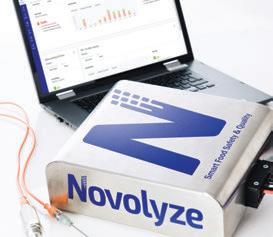
The company is working to solve the connectivity issue created by a predominance of legacy hardware in food and beverage manufacturing. “So many of the ovens, the systems, the dryers—the bits and pieces on the plant floor—they may have data they capture,” says Robert Wallace, vice president of product management. “But that hardware doesn’t necessarily talk to each other—it doesn’t talk to a mothership, it doesn’t talk to a dashboard, it doesn’t talk to anything. If you’re lucky, you can get reports o some of it. Some of those trends are changing, but there’s such a huge amount of legacy hardware out there.”
With a gateway connected to plant floor equipment and to servers, Novolyze can monitor more closely various control parameters. “You get access to a SaaS o ering with a series of dashboards that feed from one or more plants into our dashboard so that you can begin to monitor that long tail,” Wallace explains. “You can see what’s going on within your plant operations—what’s working, what’s not working, how long it’s been running. We do a lot with statistical process control, other KPIs, etc., so that we can help you tune your process.”
This is not the sort of capability that many food and beverage producers have in their plants today, according to Wallace. “Typical for the last 20 years is the clipboard—what’s the temperature at 5 minutes, what’s the temperature at 10 minutes. You’re using your pen and paper to record the performance of the device,” he says. “That’s where we are today. If you were to look at the food manufacturing business in general, a good 60 to 80% of it is, frankly, in this pre-digital stage.”
Reams of data
“We’re helping companies deal with the labor shortages, but we also help them with e ciency and help them with reaching sustainability targets
TECH PERSPECTIVE www.profoodworld.com | April 2023 | PROFOOD WORLD 63 AARON HAND | EDITOR-IN-CHIEF
TECH PERSPECTIVE
A cloud-based solution, the Novolyze platform digitalizes food safety and quality programs by aggregating, normalizing, and centralizing data, and transforming it into actionable insights.
PHOTO COURTESY OF NOVOLYZE
because a lot of these companies have zero emissions sustainability goals they’re trying to hit around water and power. So we’re taking all those paper manual processes and we’re making them digital,” notes Karim-Franck Khinouche, founder and CEO of Novolyze. “There is an unmet market opportunity to really get in there and help these companies—some of them with decades of experience in processes that are kind of still stuck in the 1980s.”
Something we’ve heard over and over again is that manufacturers are gathering tons of data, but they’re not able to do much with that data. “We see these big companies with reams of paper data, but they’re not able to tell a story with it; they’re not able to extract anything useful from this data,” Khinouche says. “Why are you logging all this data—all these positive and negative test results—if you can’t see patterns, if you can’t help yourself understand where in the plant floor there might be a higher risk of some contamination in terms of environmental monitoring, or when you’re seeing a batch problem?”
Instead, manufacturers have the opportunity to use that data to analyze trends, learn something for the future. Down the line, that analysis might help you put actions in place to avoid product holds or recalls.
The Novolyze platform is well suited to providing information across an entire manufacturing operation—bringing data from all the equipment to one view to improve throughput, e ciency, and sustainability.
“Today, the food manufacturers have so many di erent vendors coming in, and each vendor has its own little piece of software—the lab has a piece of software, the equipment has a piece of software, the oven, the extruders, they all have these pieces of software, but they don’t talk to one another. So they’re very limited in their scope of what they can oversee,” Khinouche says. “If you’re a food manufacturer, maybe you have 20 di erent vendors who are covering everything from supply chain logistics to testing to sanitation to equipment, and you want to be able to put that all into one pane of glass over the plant. And that’s what this software does.”
Protein’s sweet spot
Novolyze is finding that its process control platform is particularly well suited to the protein sector, which has seen the biggest gains from its capabilities. “We’ve really excelled in the thermal processes
specifically with proteins and being able to really optimize the process so that they’re cooking the product just enough that it maintains its quality, that it maintains its safety, but not overcooking it,” Khinouche says, explaining that this really comes into play on the sustainability side, where manufacturers have an opportunity to optimize energy, water, and chemical use. “We’re trying to help food manufacturers validate their processes, whether it’s the kill step process or it’s the testing process or it’s the sanitation process.”
Whether it’s in sous vide equipment, ovens, or other processes, protein producers are dealing with a range of bacteria such as listeria or salmonella. “So the opportunity for them is to say, ‘I’ve cooked it well enough, I’ve cooked it long enough, I’ve retained the flavor, I’ve retained the nutrition, and I’m not wasting as much as I used to waste,’” Wallace says. “If you look at the data, something like 30% of our manufactured food is wasted. I’d sure like to be able to put a bigger dent in that.”
Proteins here mean not only ready-to-eat meats, Khinouche notes, but also plant-based proteins. “It’s very di cult because you want to kill the pathogens, but you also have non-pathogenic bacteria that is surviving. You want to make sure it’s safe, but you don’t want to make it so that it’s inedible,” he says. “There’s a lot of optimization that we see that can happen for the protein manufacturers.”
With each new customer, Novolyze visits the plant and studies the process to show, through modeling, how throughput e ciencies and cook times will improve. “Every case that we’ve been through so far with protein has shown that using our system is truly going to save that customer money and time,” Khinouche says. “We’re able to help them with managing labor shortfalls, and we’re able to make sure that everything is traceable and compliant with regulations.”
Novolyze sees its technology on a continuum of progress for the industry—moving from paper records and Excel spreadsheets to data digitalization and aggregation and on to o erings like this platform that provides cloud services and trend analytics. “Next is we’re going to get into the advanced analytics, because now we have cloud services, both predictive as well as prescriptive analytics—here’s what we think is going to happen and here’s what we think you should do,” Wallace says. “And then we get into the AI and machine learning element of this. For instance, we’re talking with a very large manufacturer that’s saying, ‘We want to release our stu sooner. Can you help us do that?’”
Novolyze www.novolyze.com
TECH PERSPECTIVE 64 PROFOOD WORLD | April 2023 | www.profoodworld.com
“We’re able to make sure that everything is traceable and compliant with regulations.”
Discover Countless Solutions for Packaged Foods
Whether it’s groundbreaking end-of-line automation, flexible front-of-the-line processing equipment, innovative materials or sustainable supply chain solutions, you’ll encounter the latest advances in food packaging and processing up close at PACK EXPO Las Vegas Get ideas from other industries and discover surprising solutions for your food products.

packexpolasvegas.com prepare
REGISTER NOW at the $30 Early Bird Rate!
40+
100+
Endless
Newly Expanded
to be wowed
2,000 exhibitors
vertical markets
free show floor sessions
networking opportunities Featuring
Clean.
Hygienic drive solutions for areas subject to frequent cleaning
The stainless steel gear units from SEW-EURODRIVE keep things moving wherever machines and systems are subject to particularly intensive cleaning. Regardless of whether the gearmotors are used for material handling, intralogistics or sanitary
applications, their hygienic properties, long operating life, and maintenance friendliness make them optimally suited in the food and beverage and pharmaceutical industries, and in permanently wet environments.

www.seweurodrive.com
www












































































































































 MICHAEL COSTA | SENIOR EDITOR
MICHAEL COSTA | SENIOR EDITOR






























































































































































































































































 Regal Rexnord | regalrexnord.com
Regal Rexnord | regalrexnord.com






































